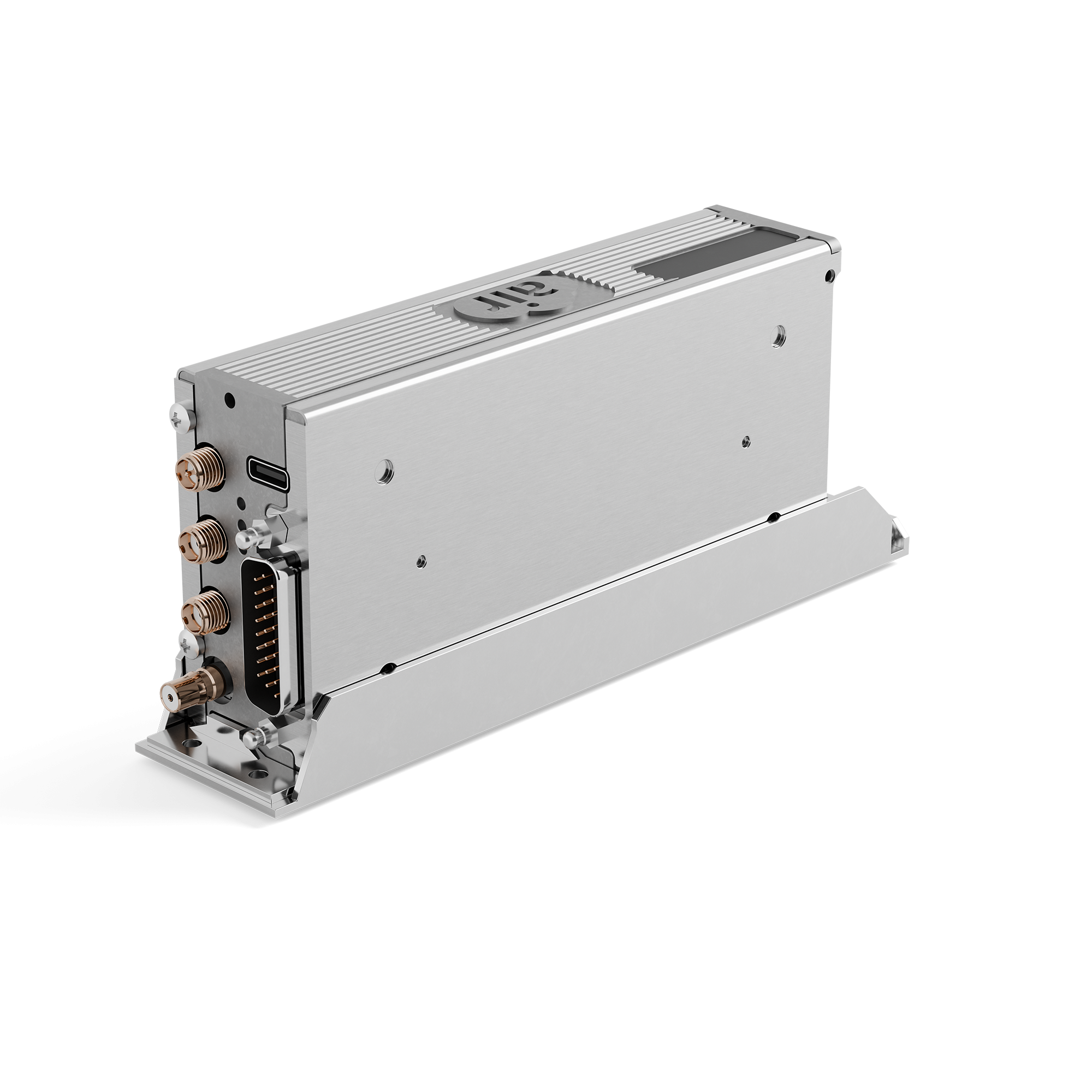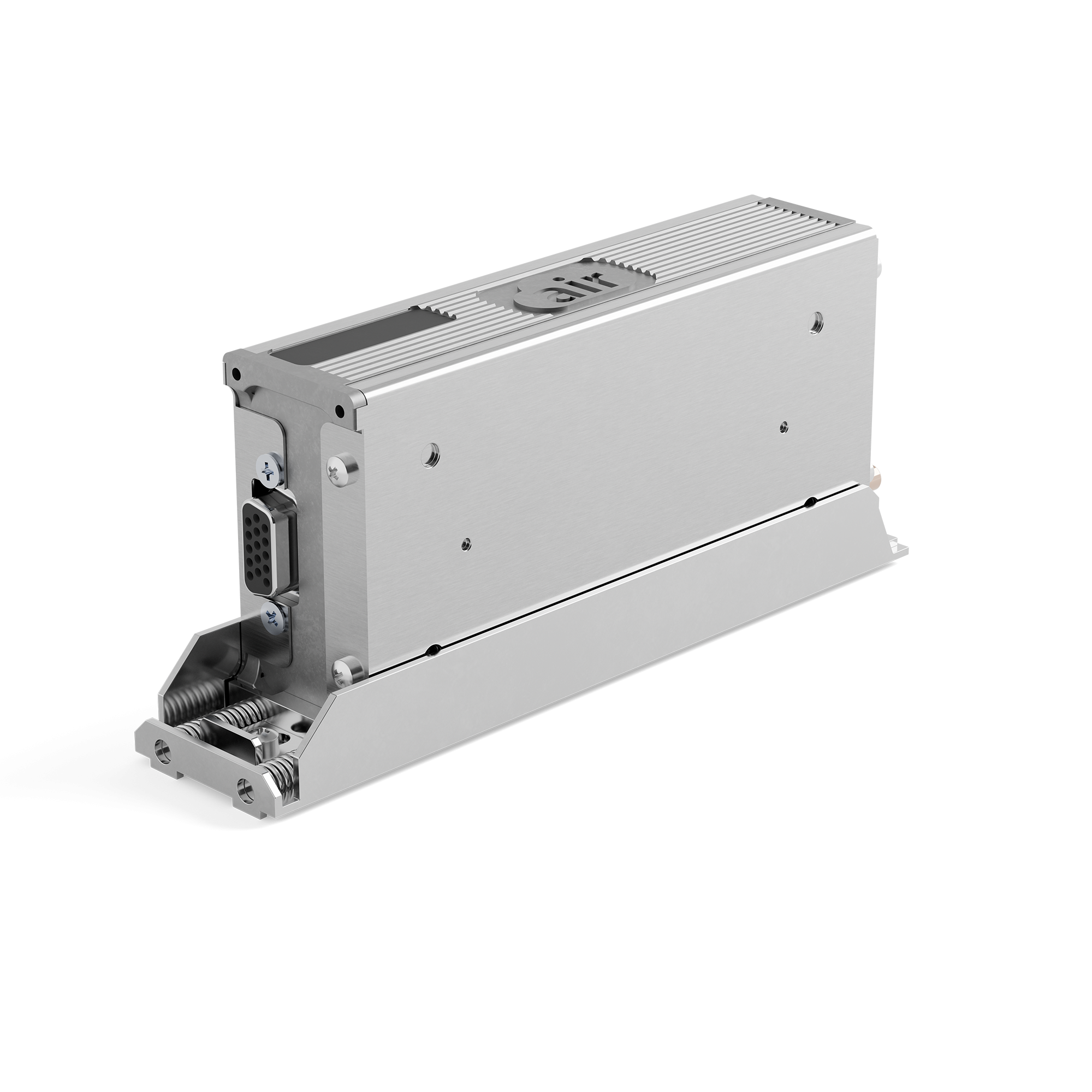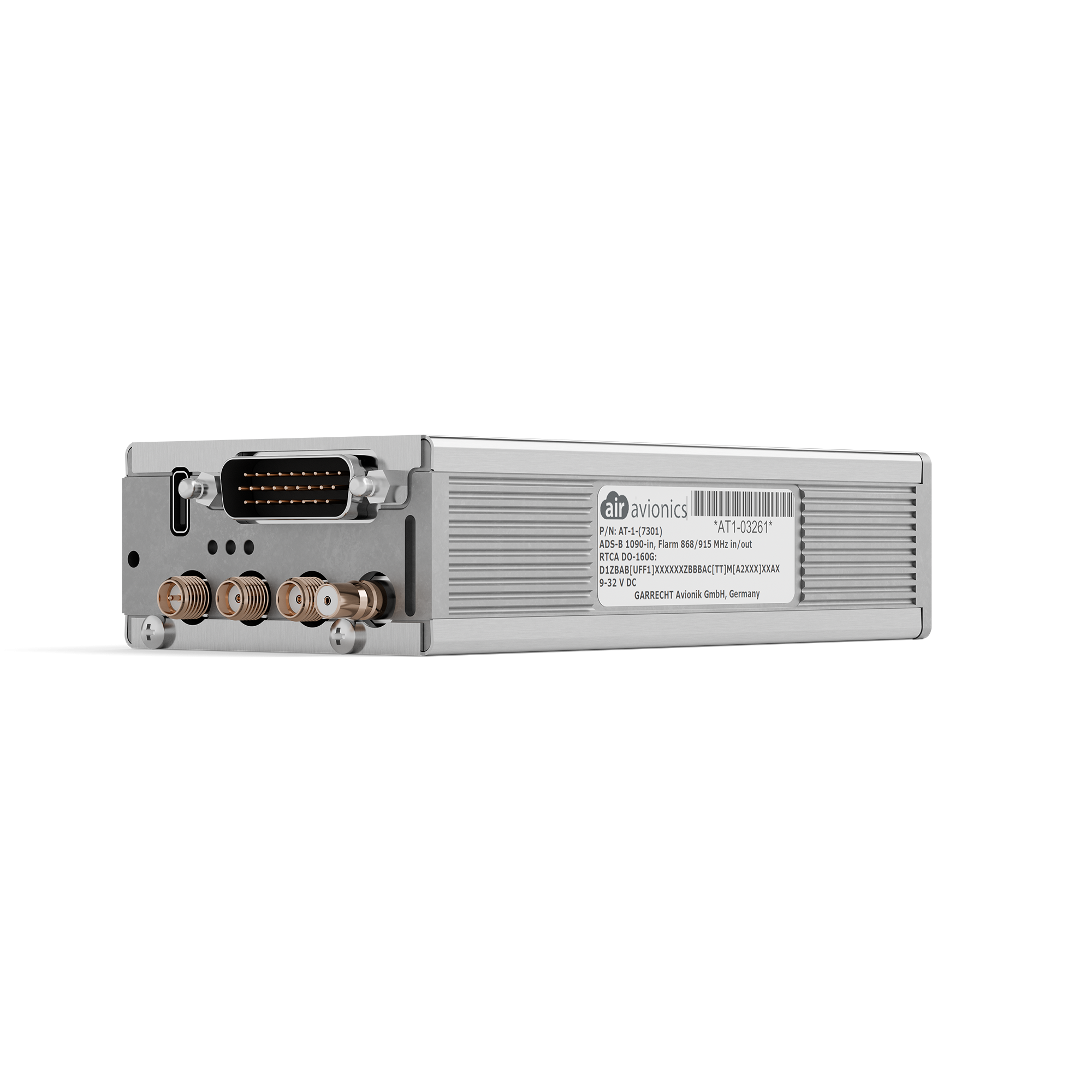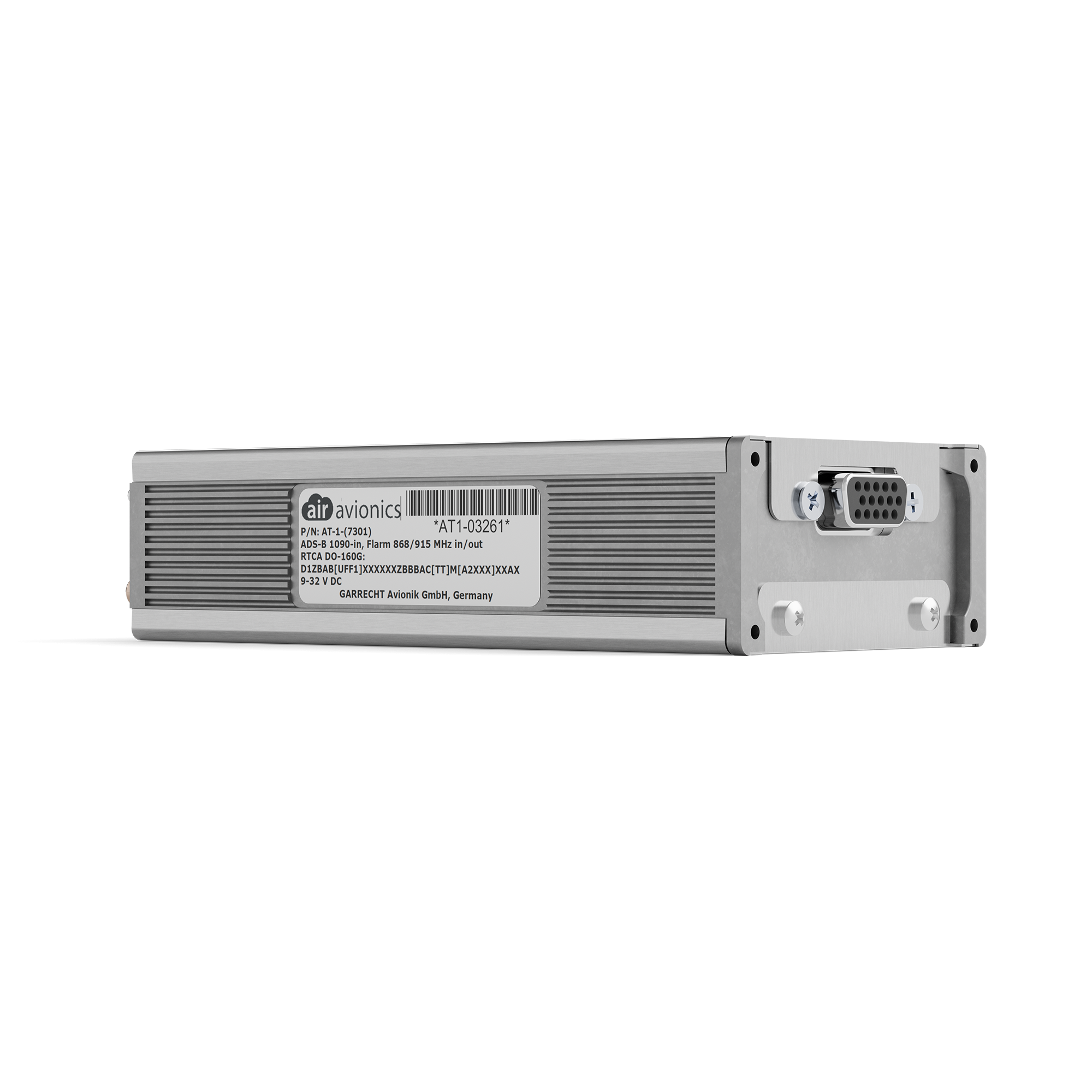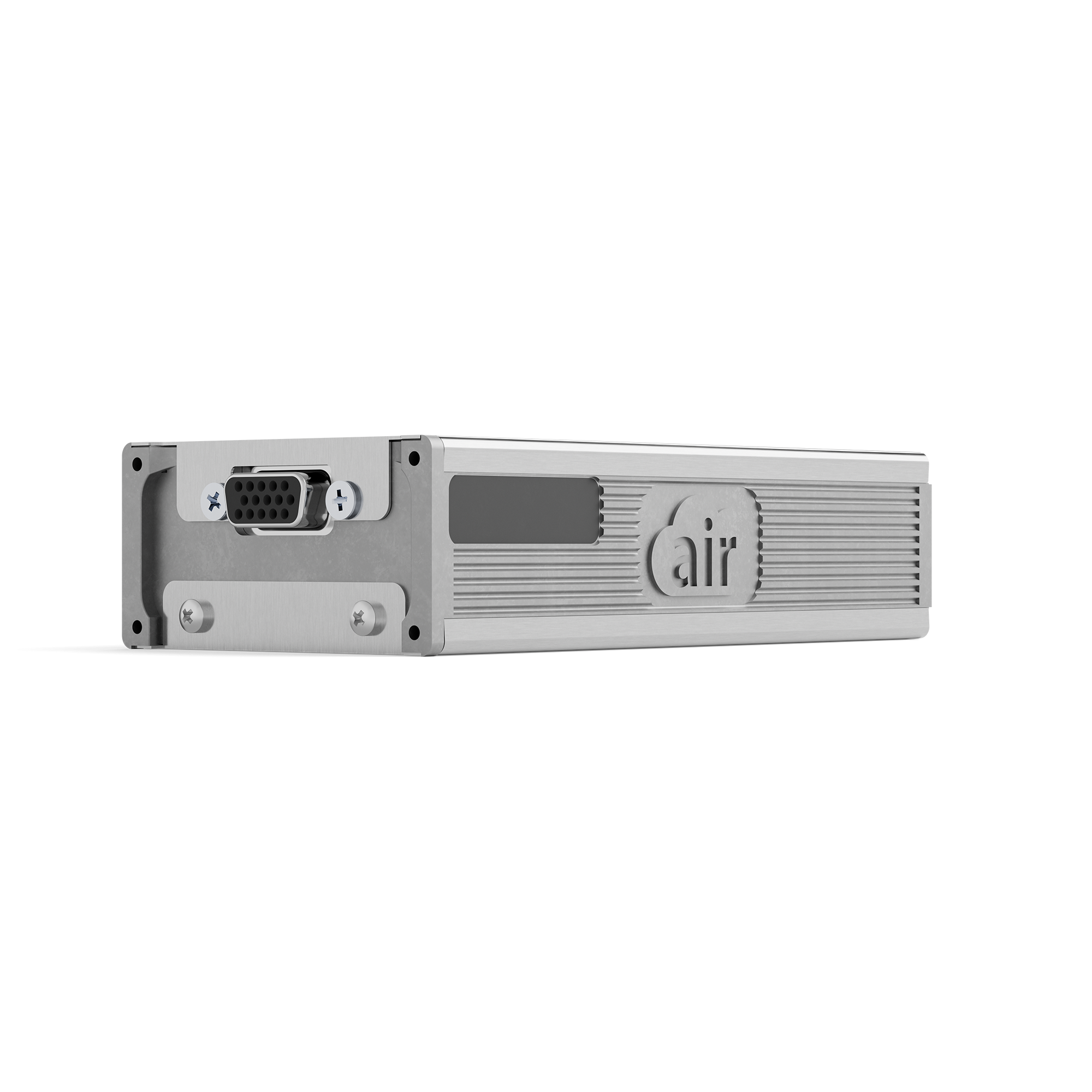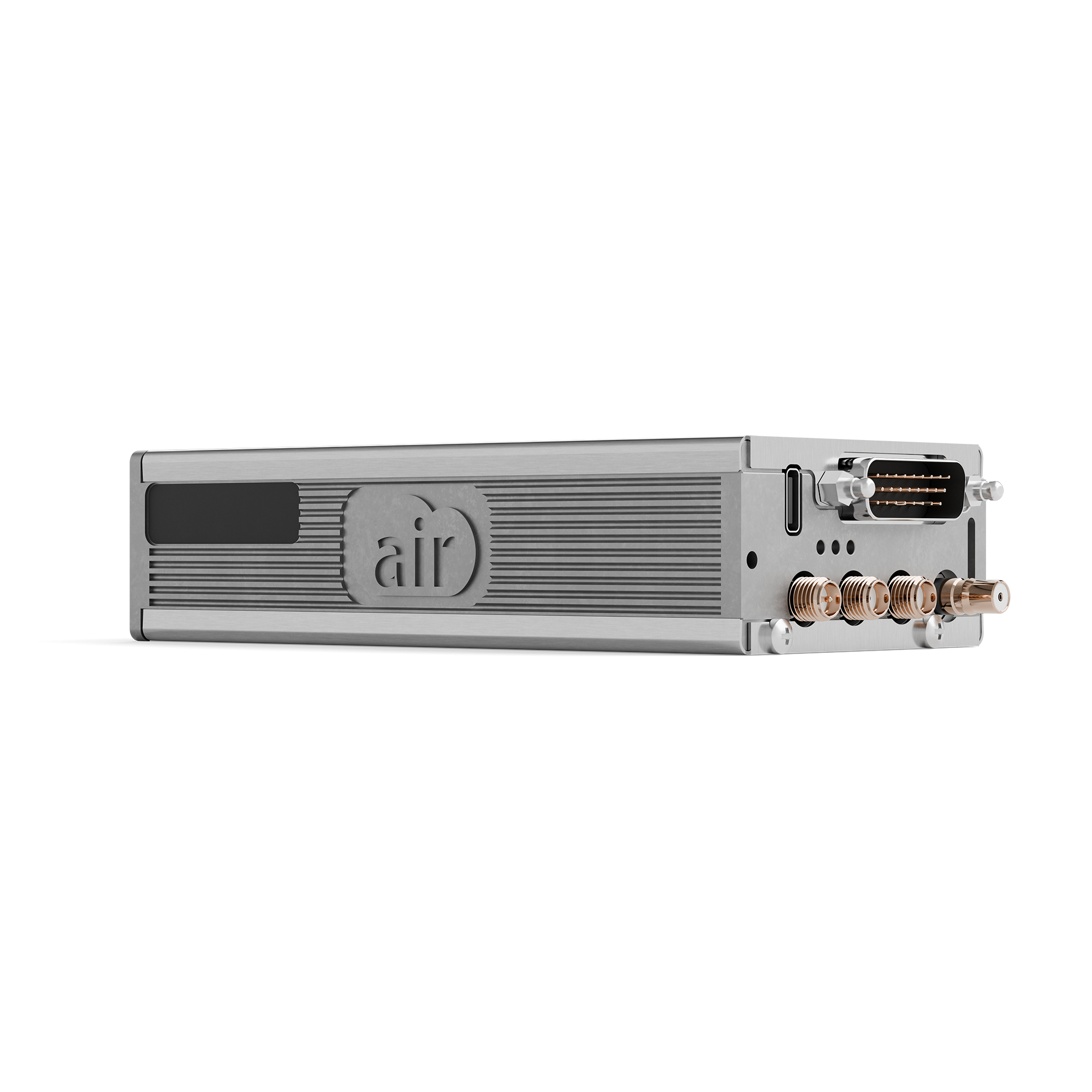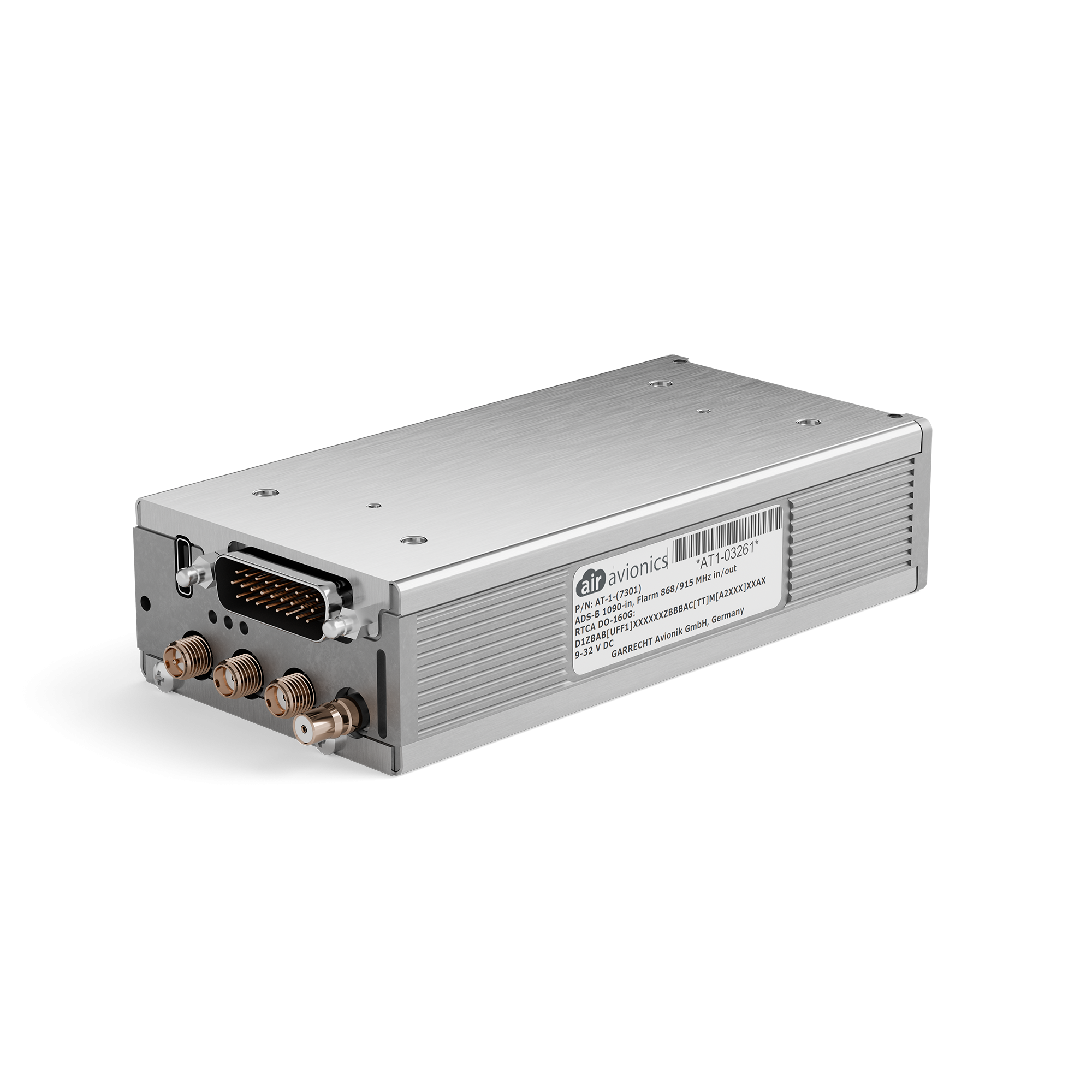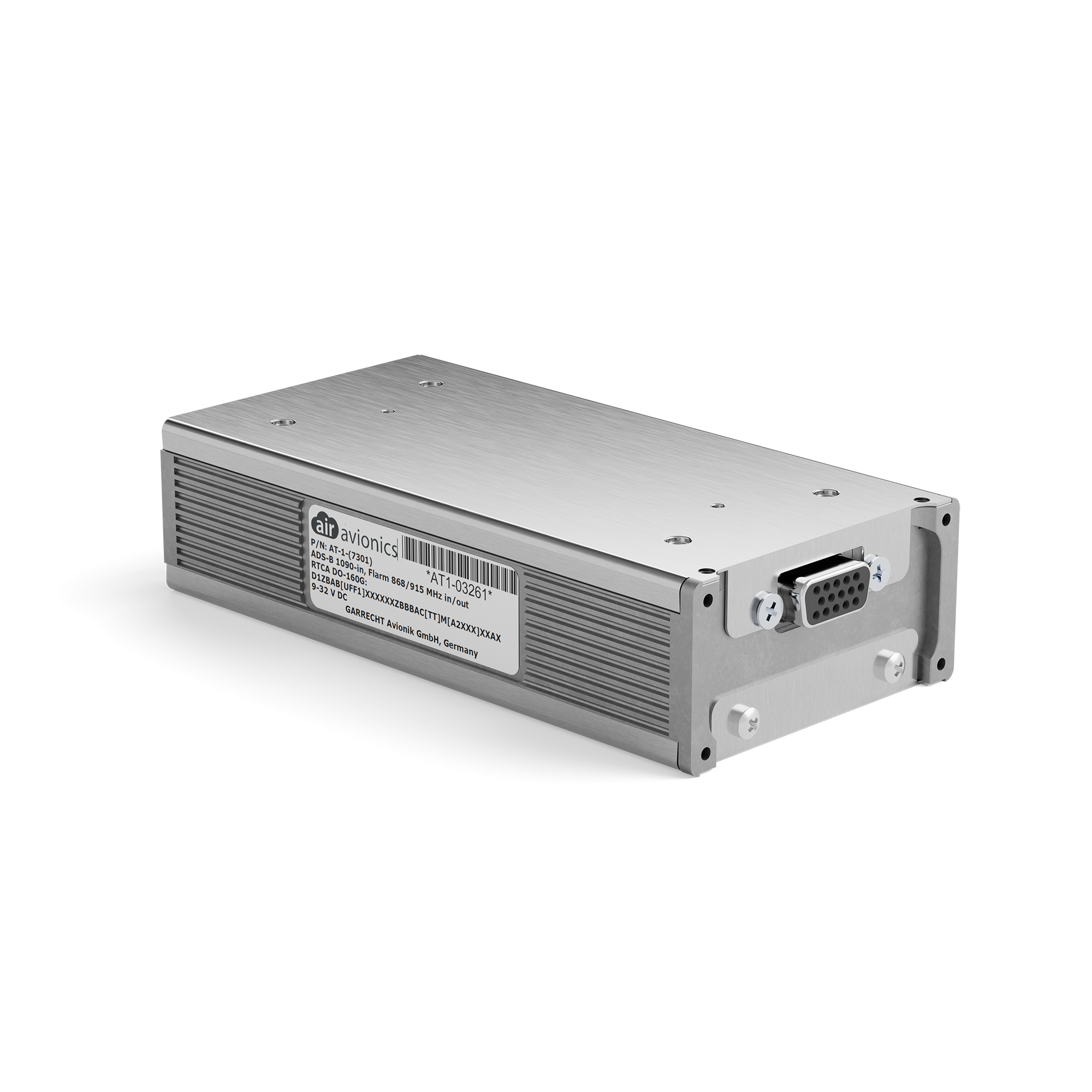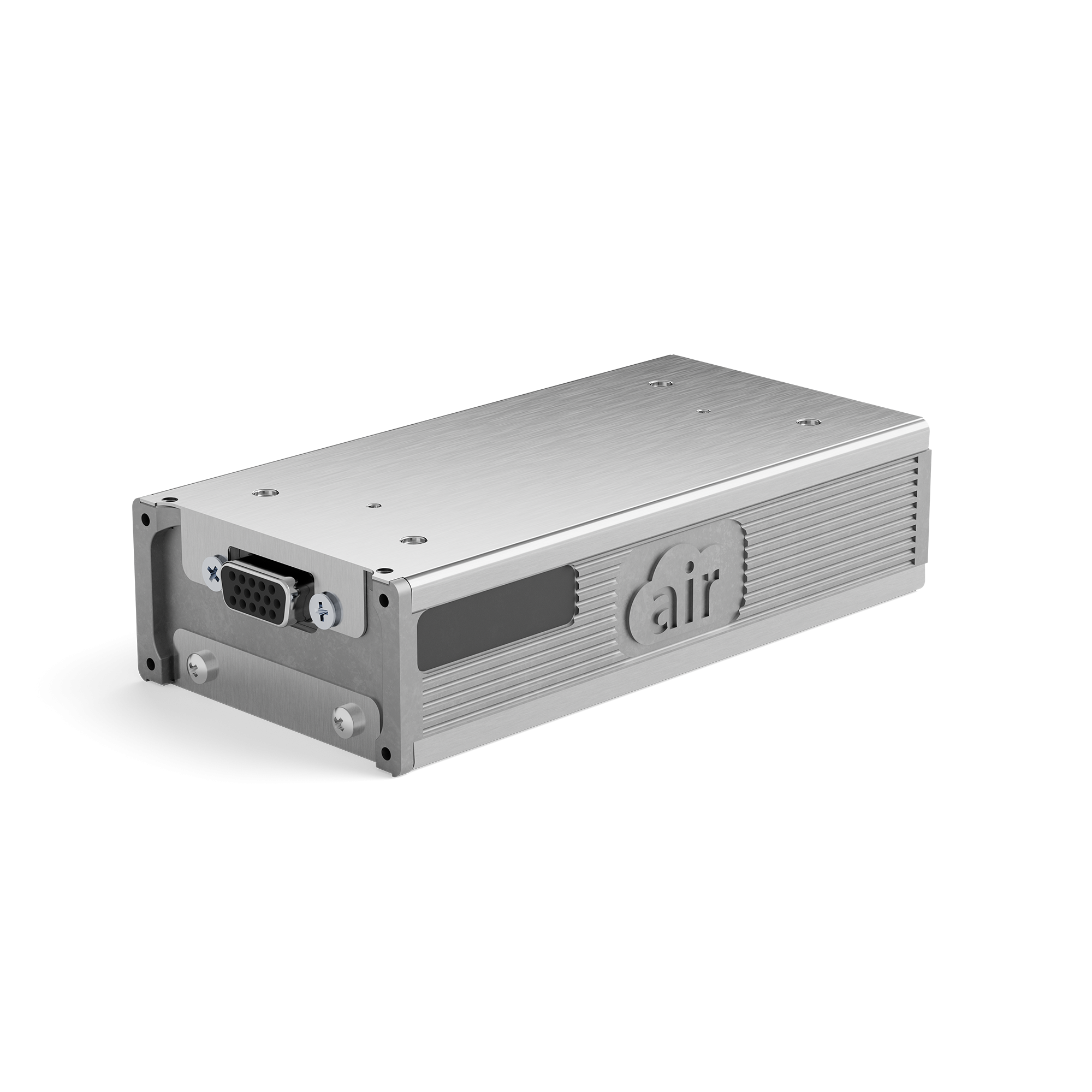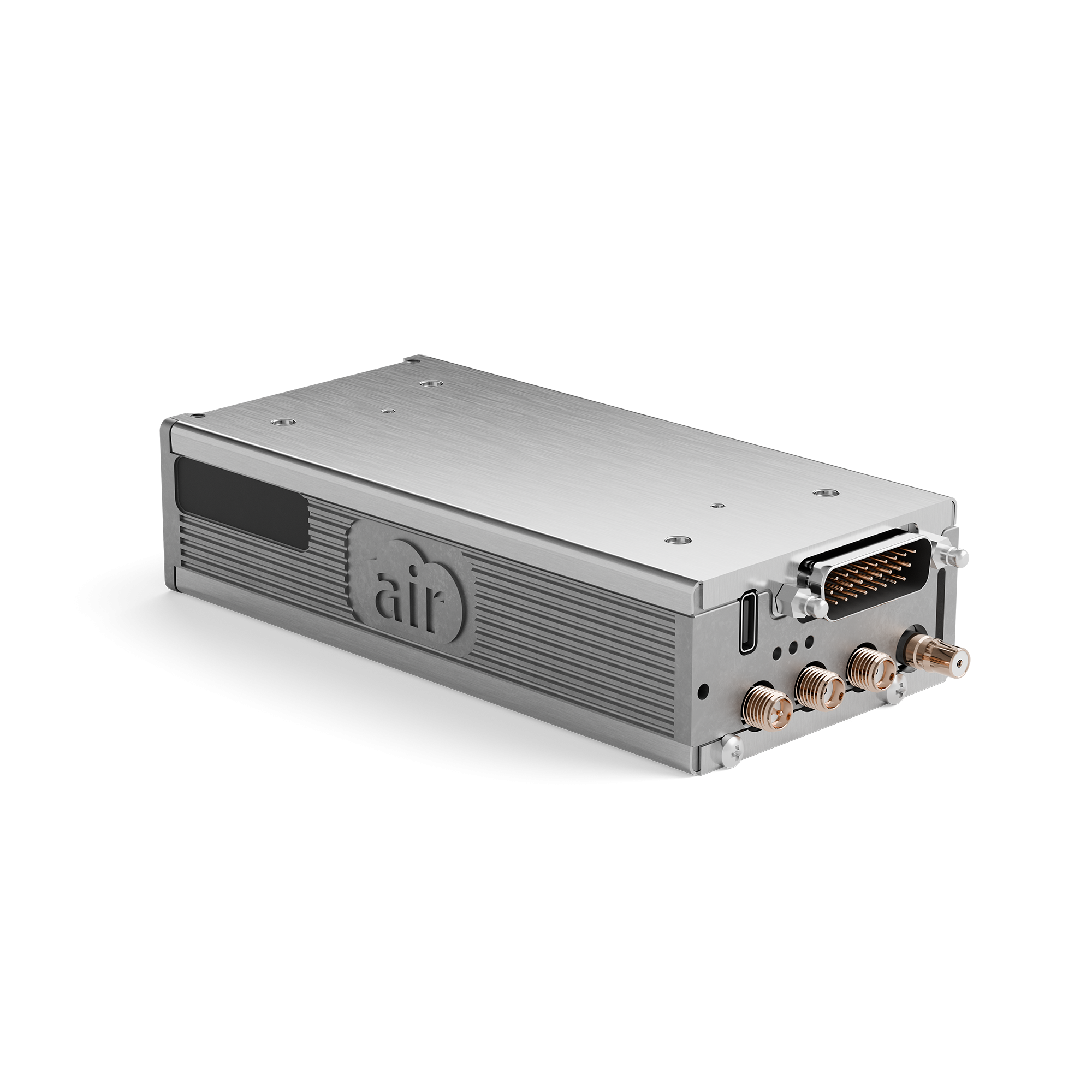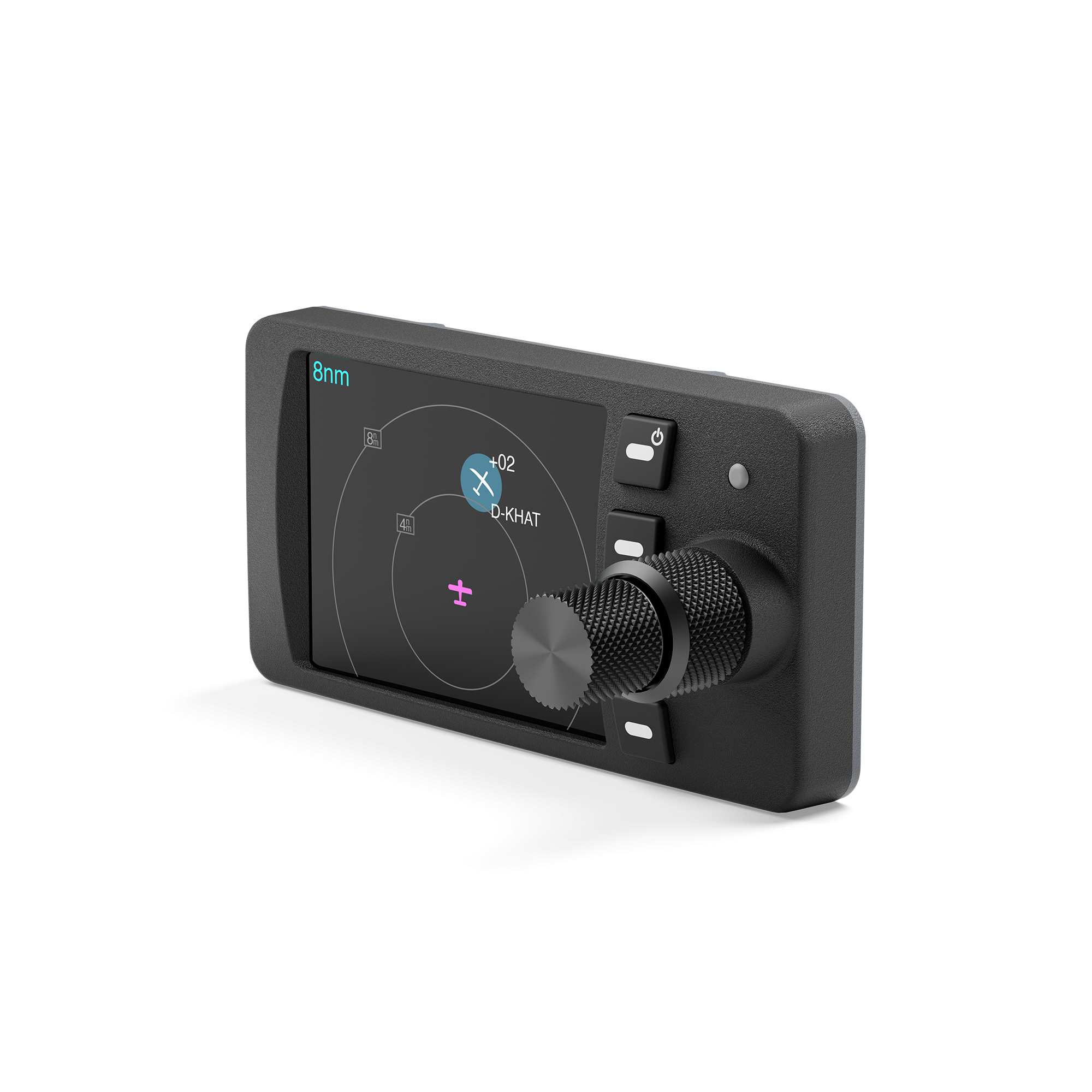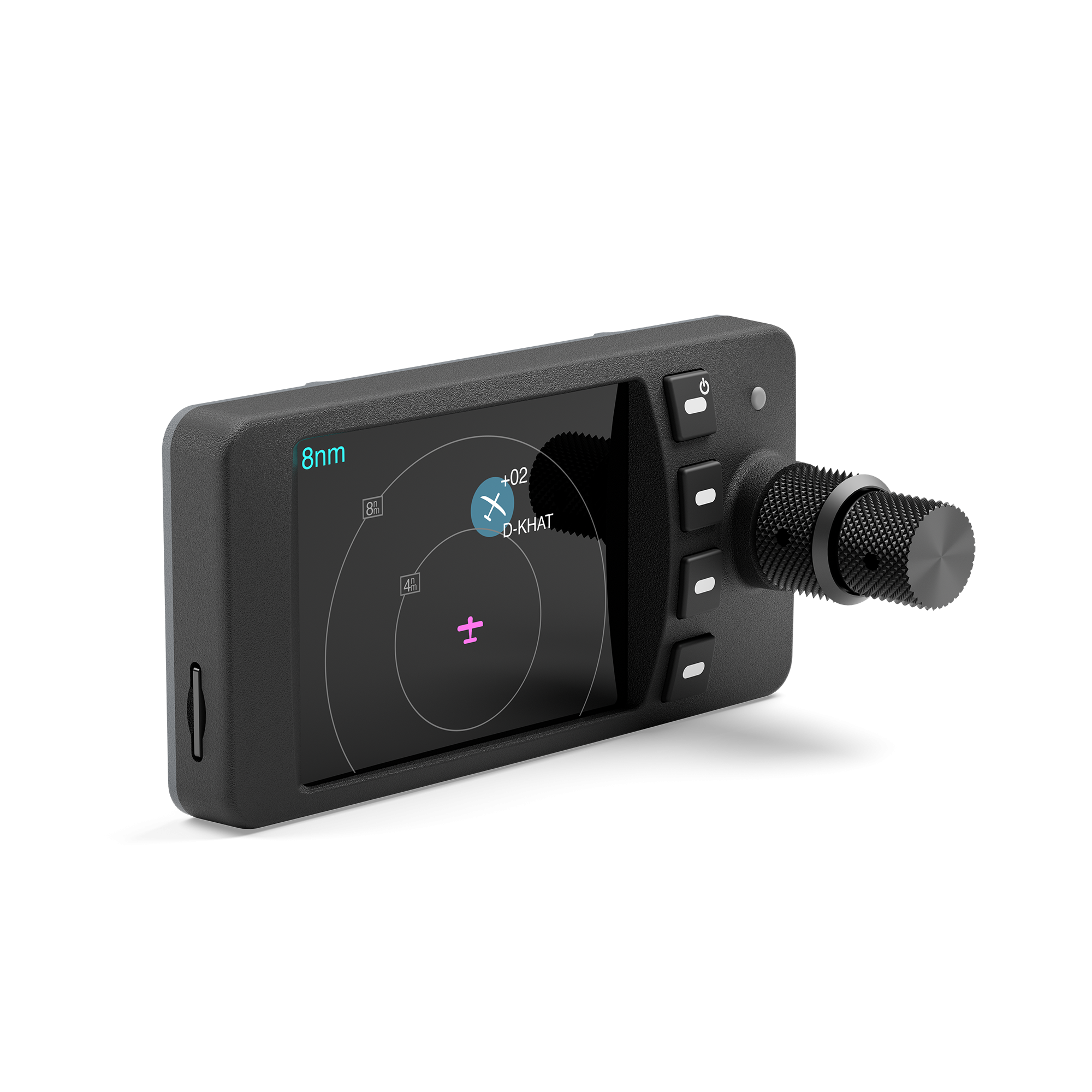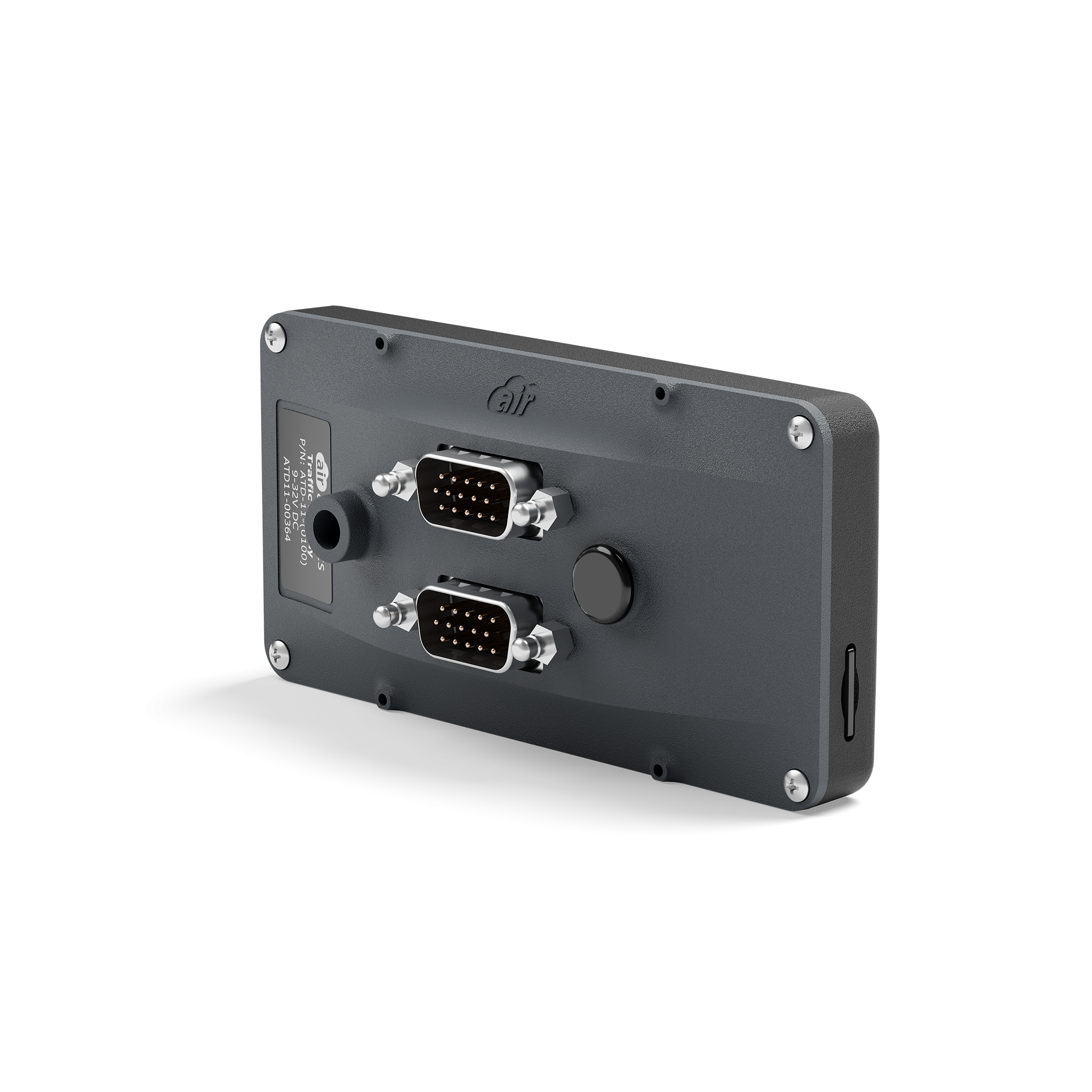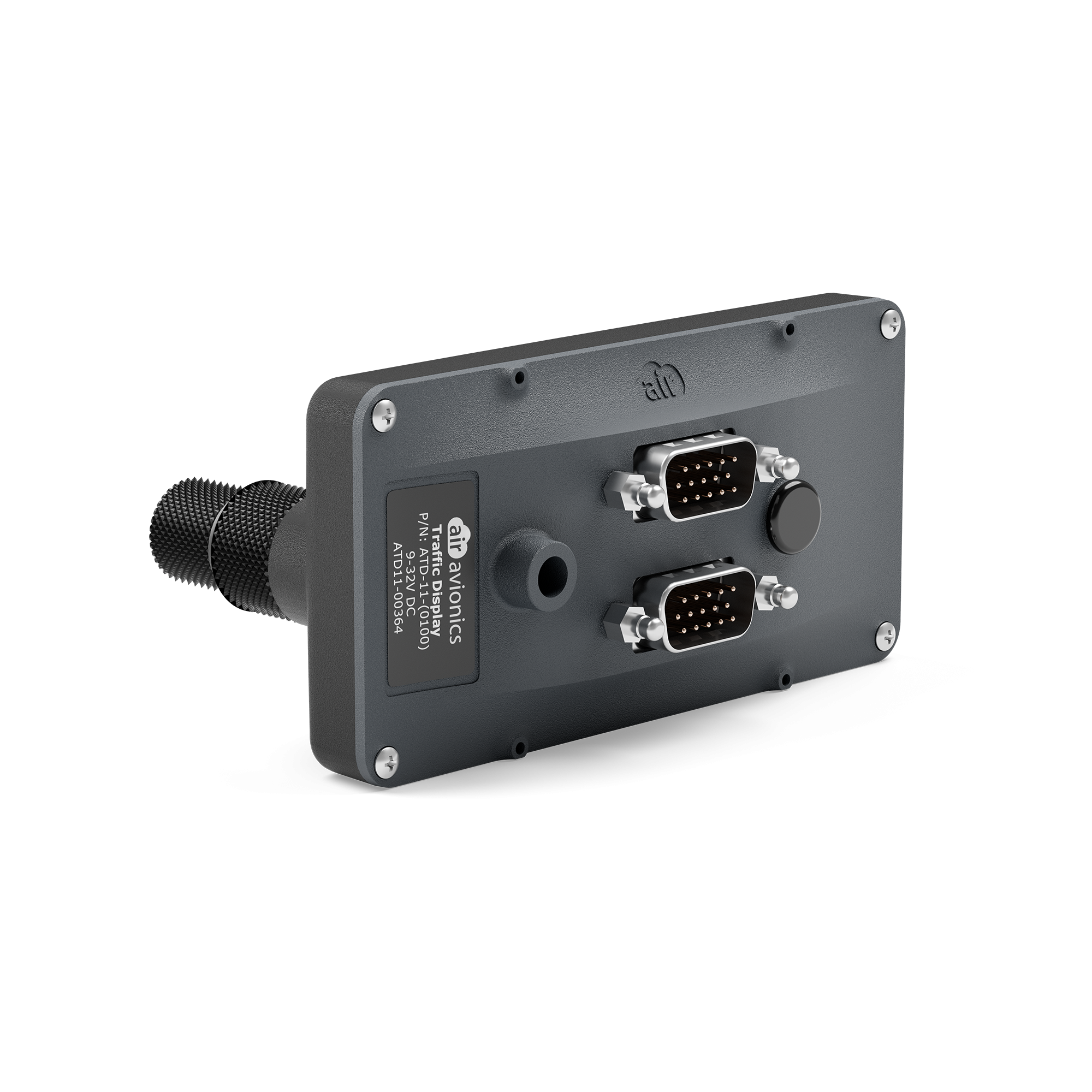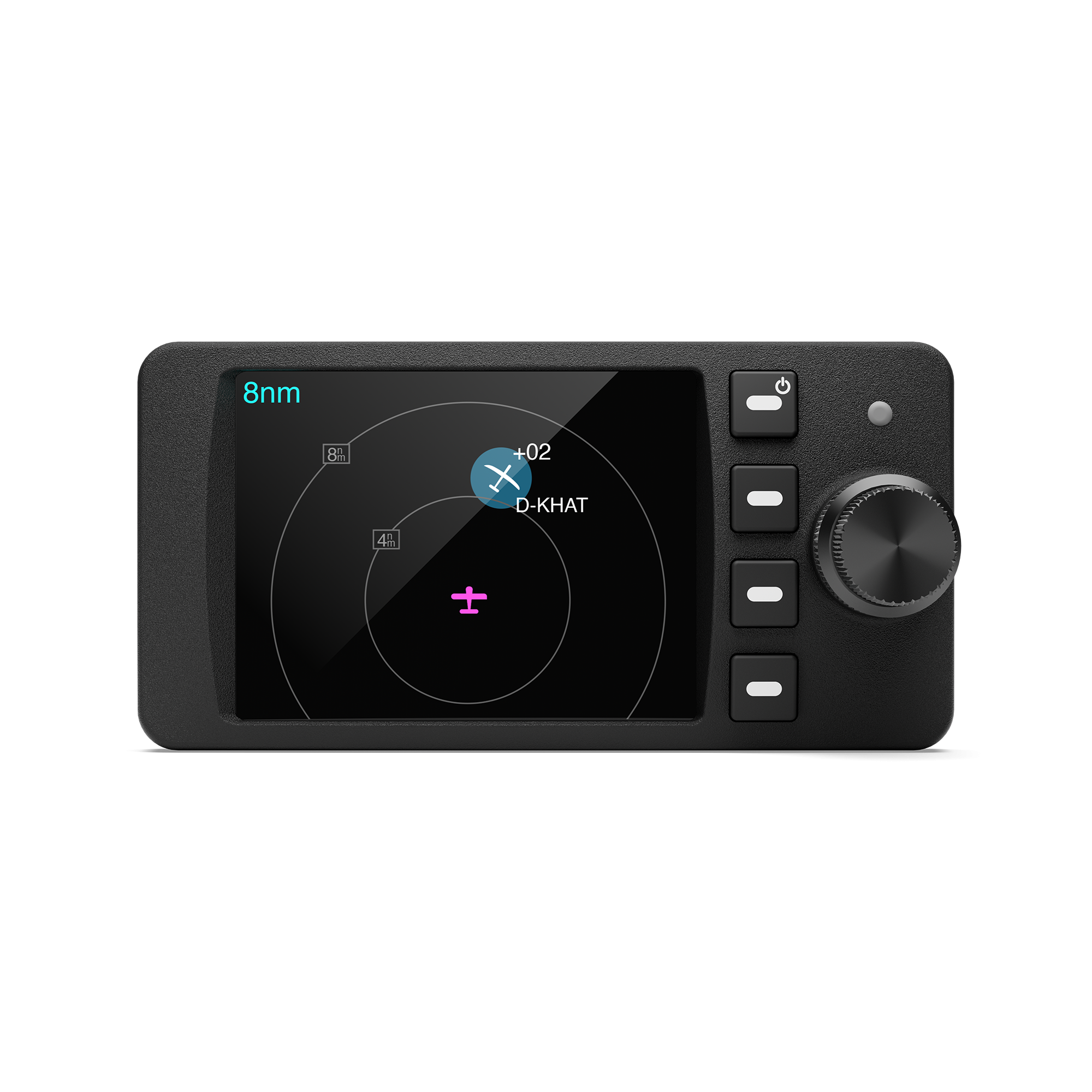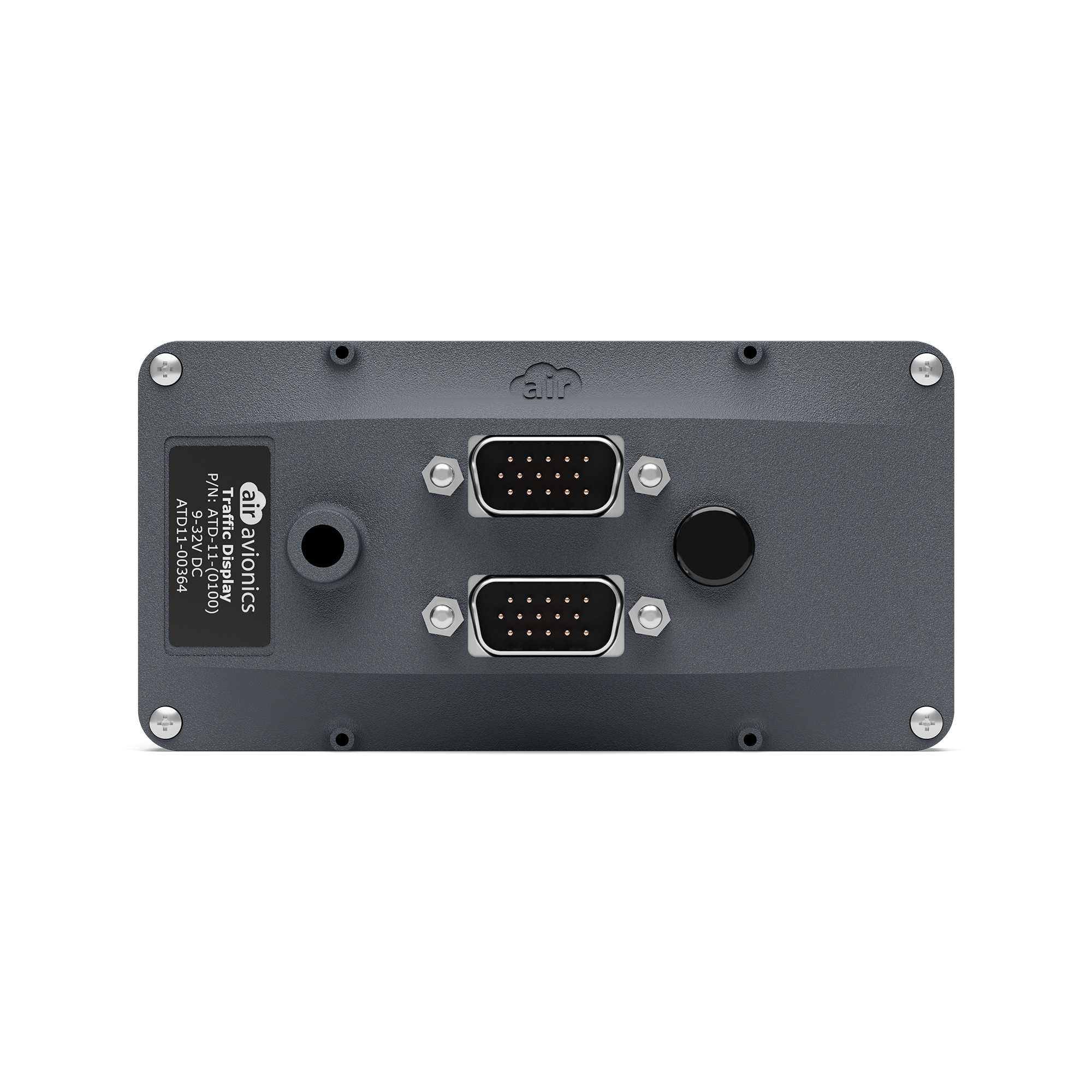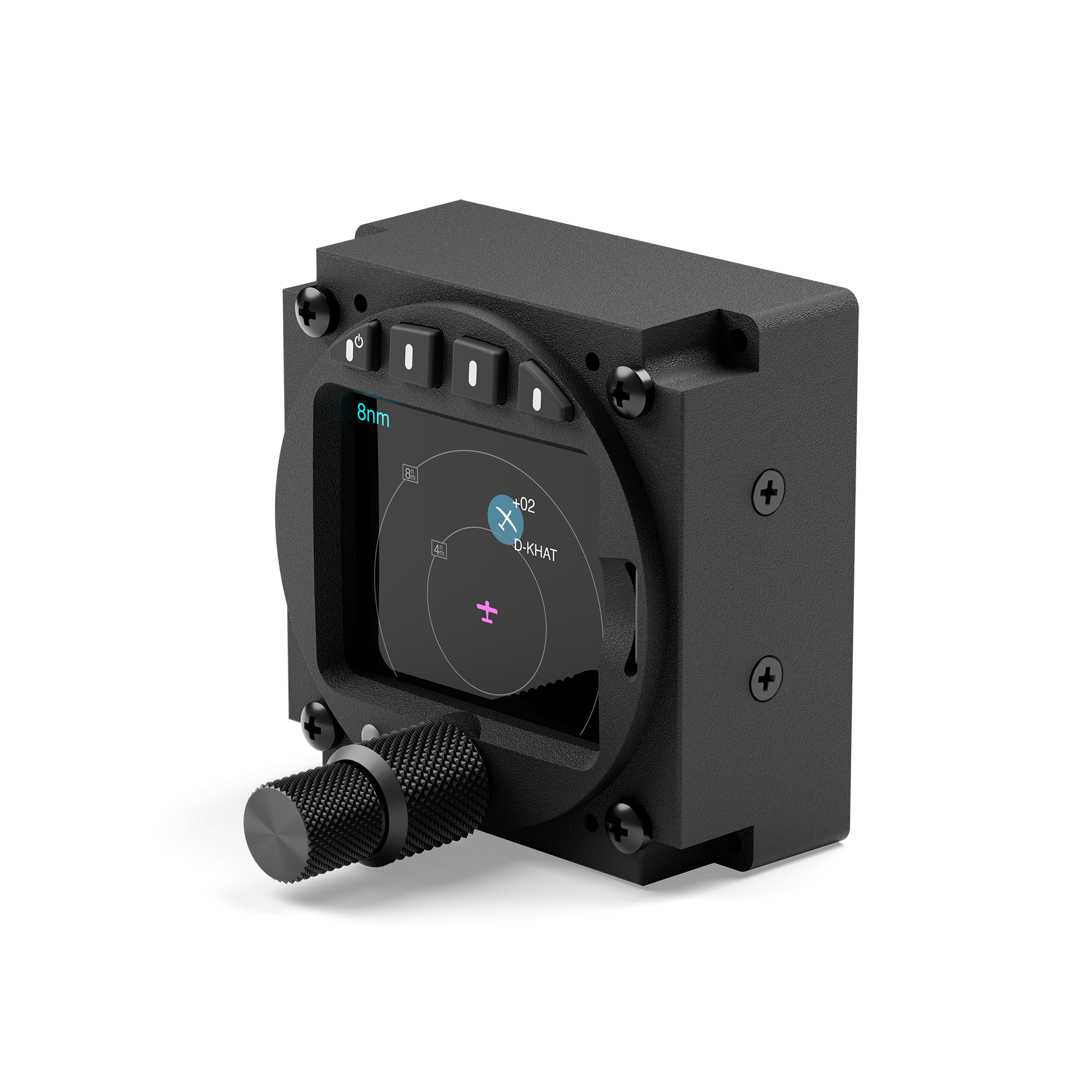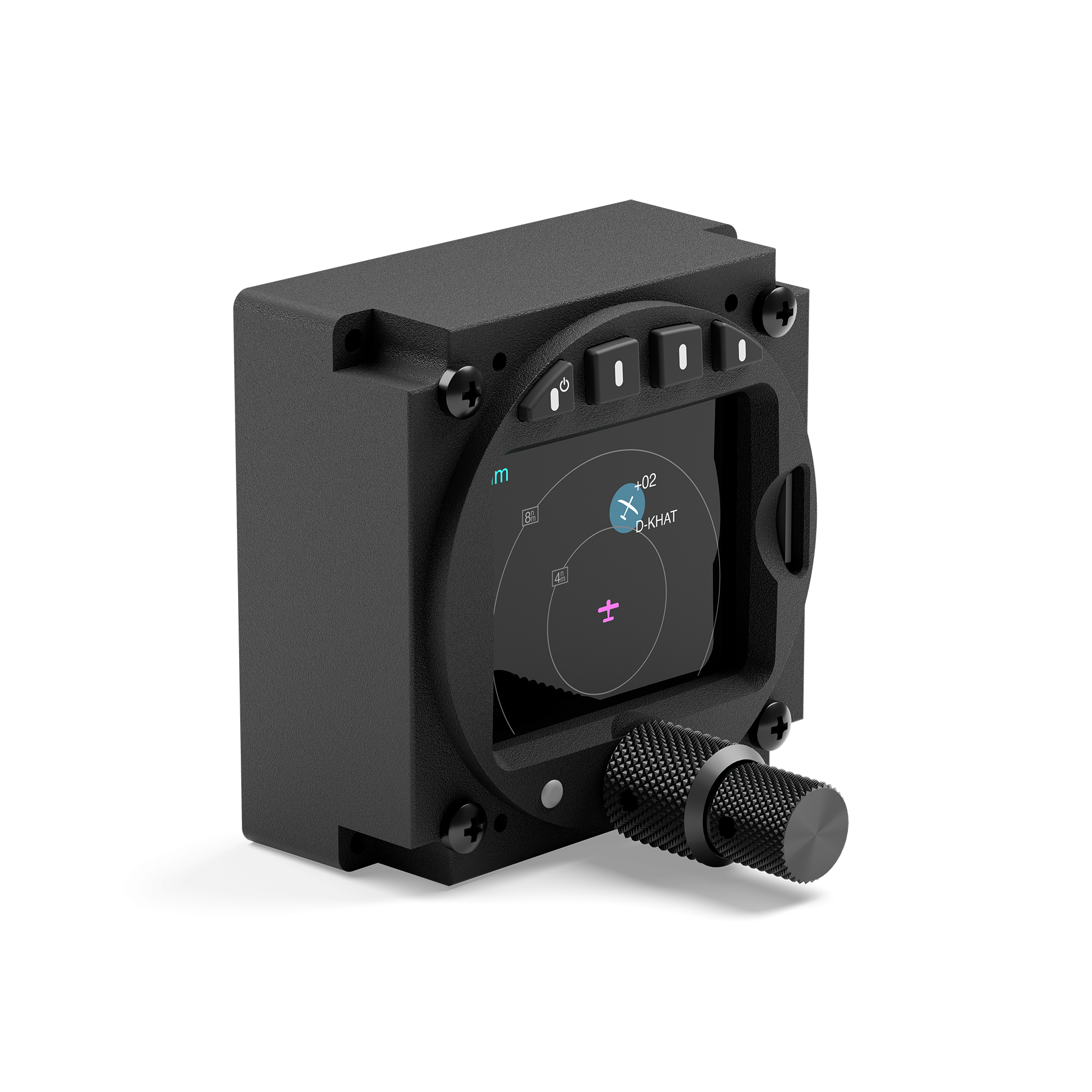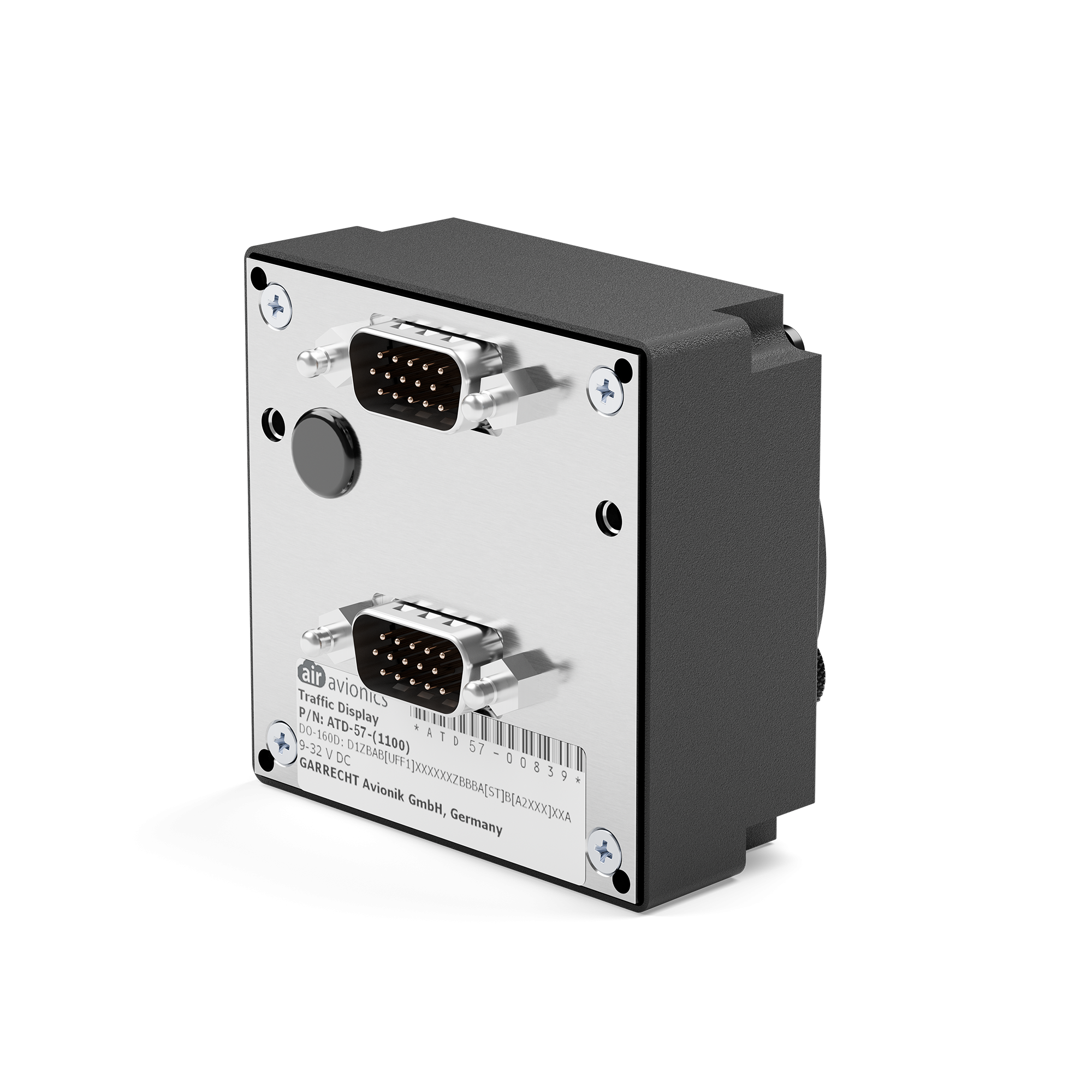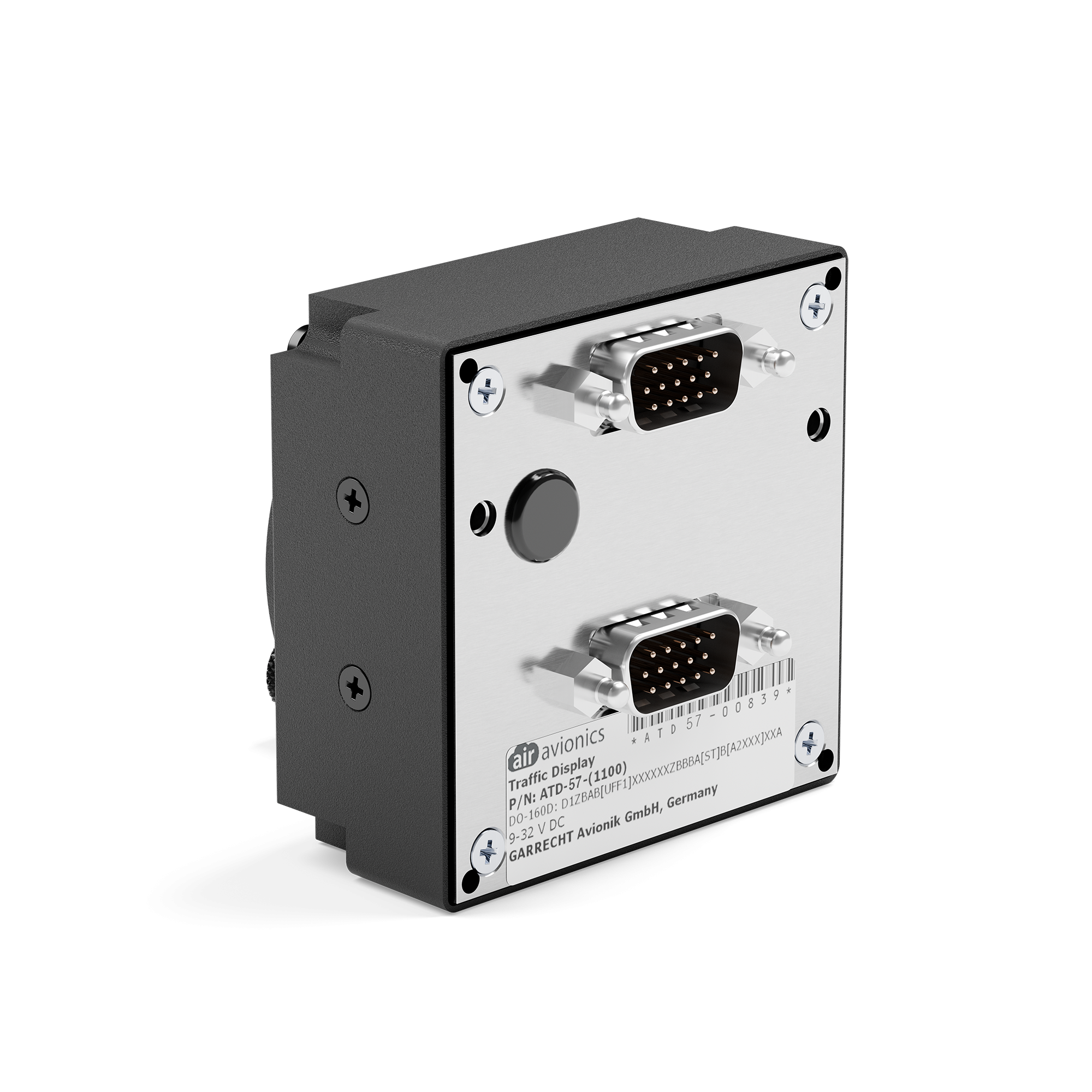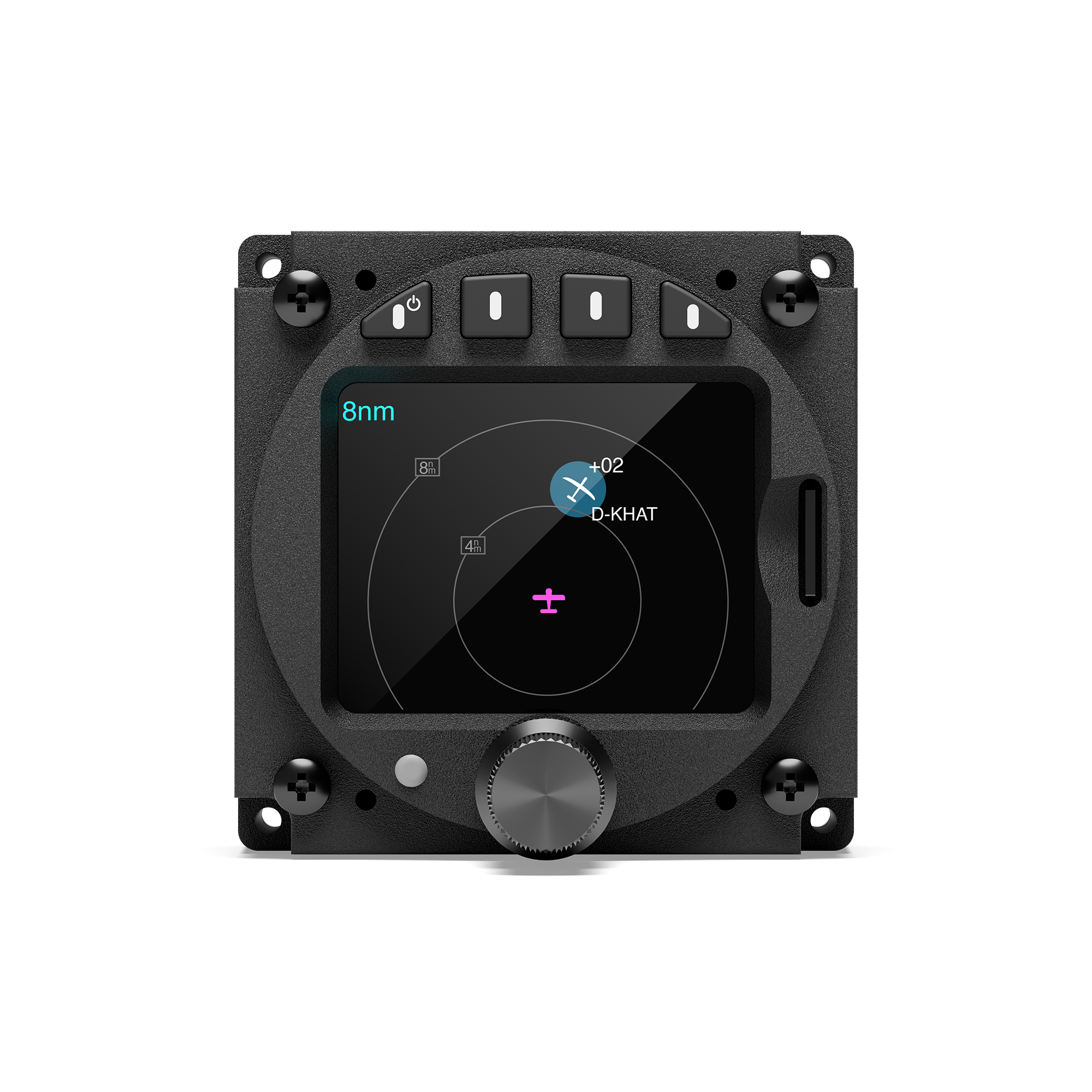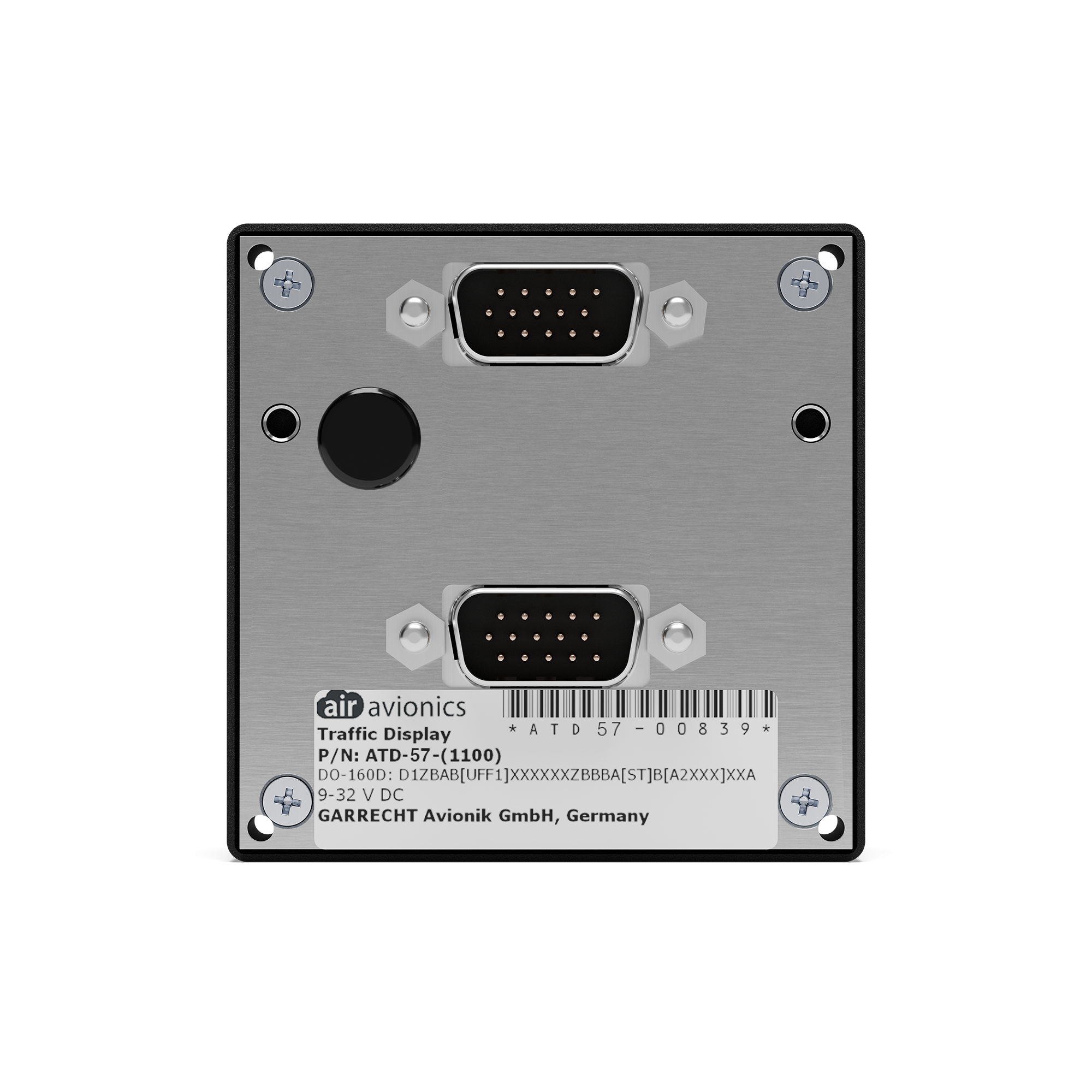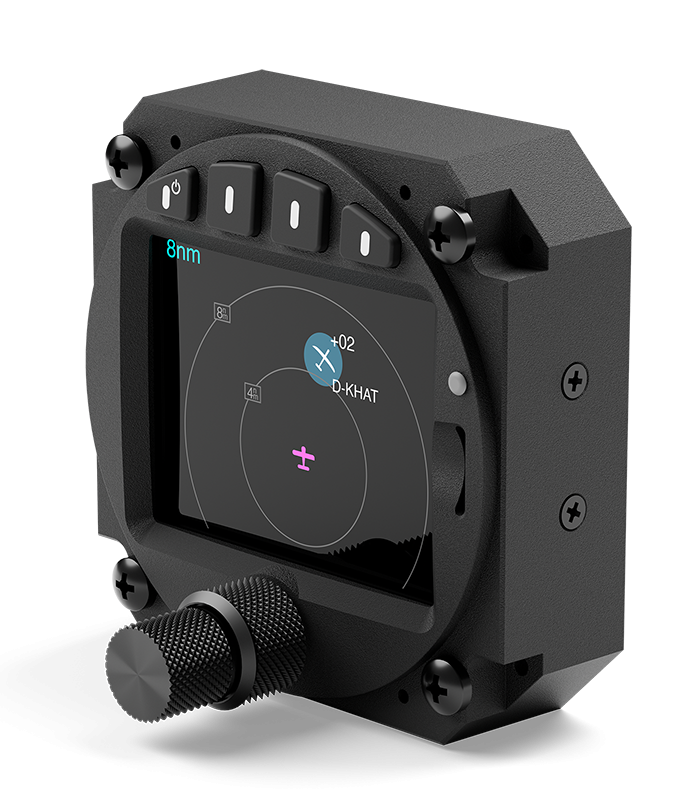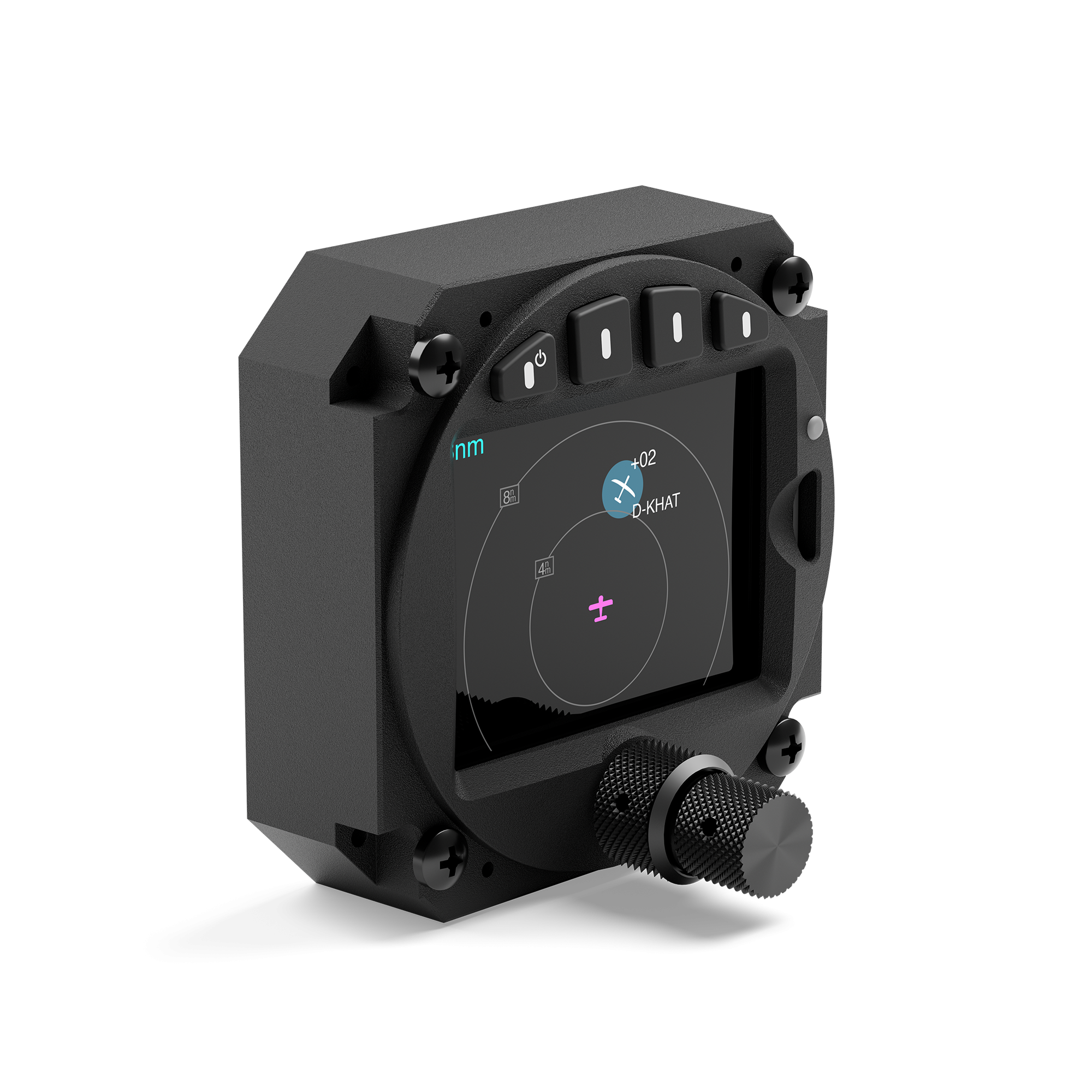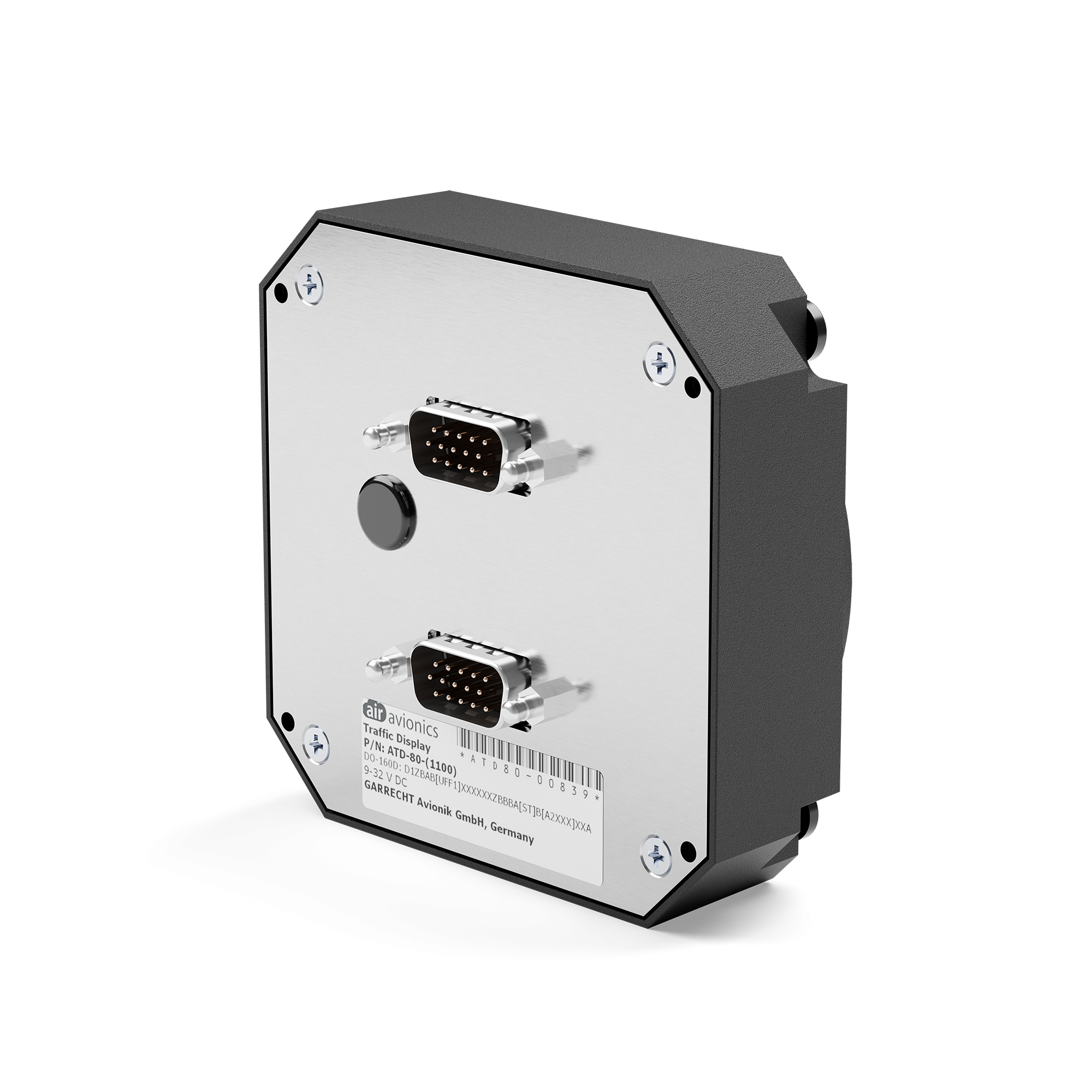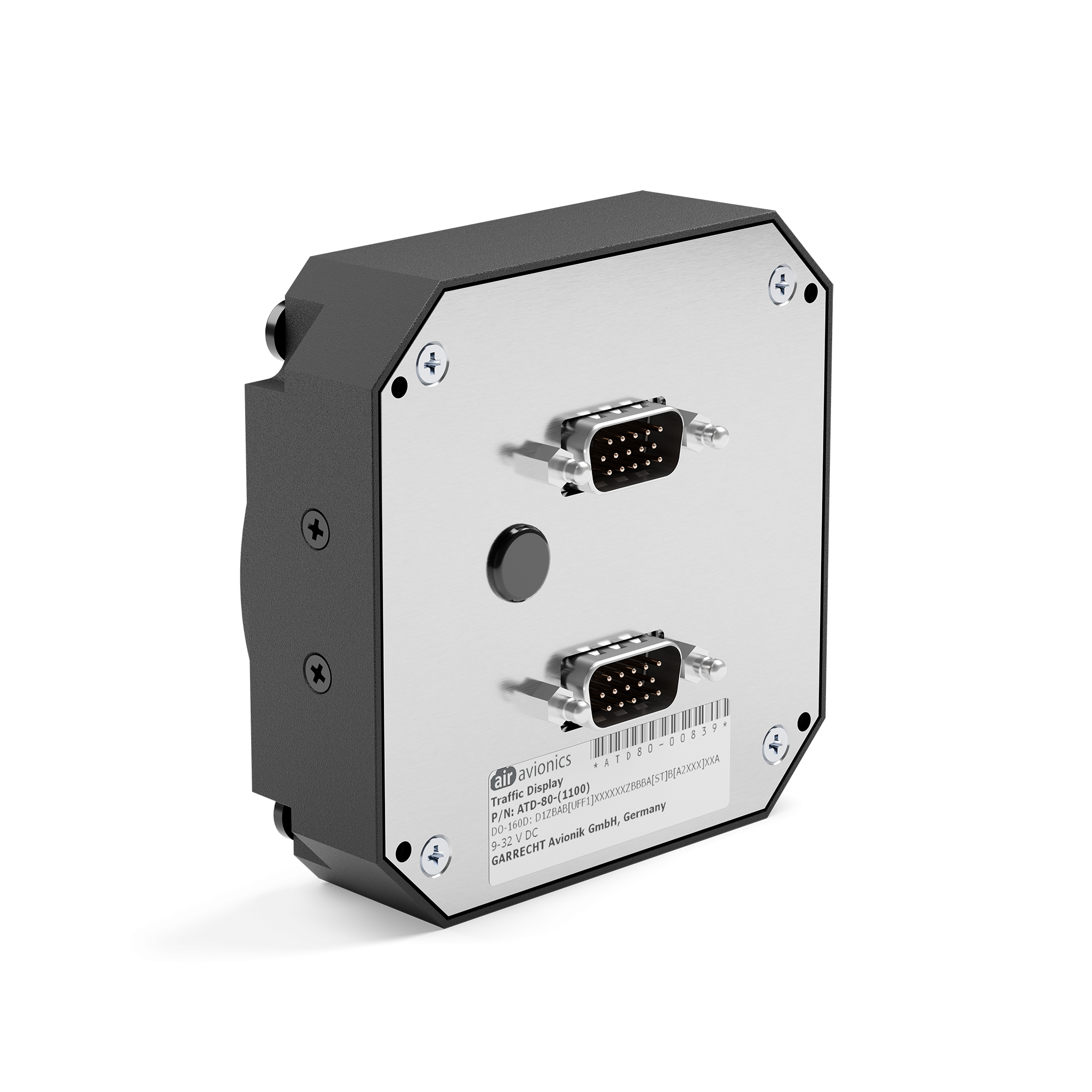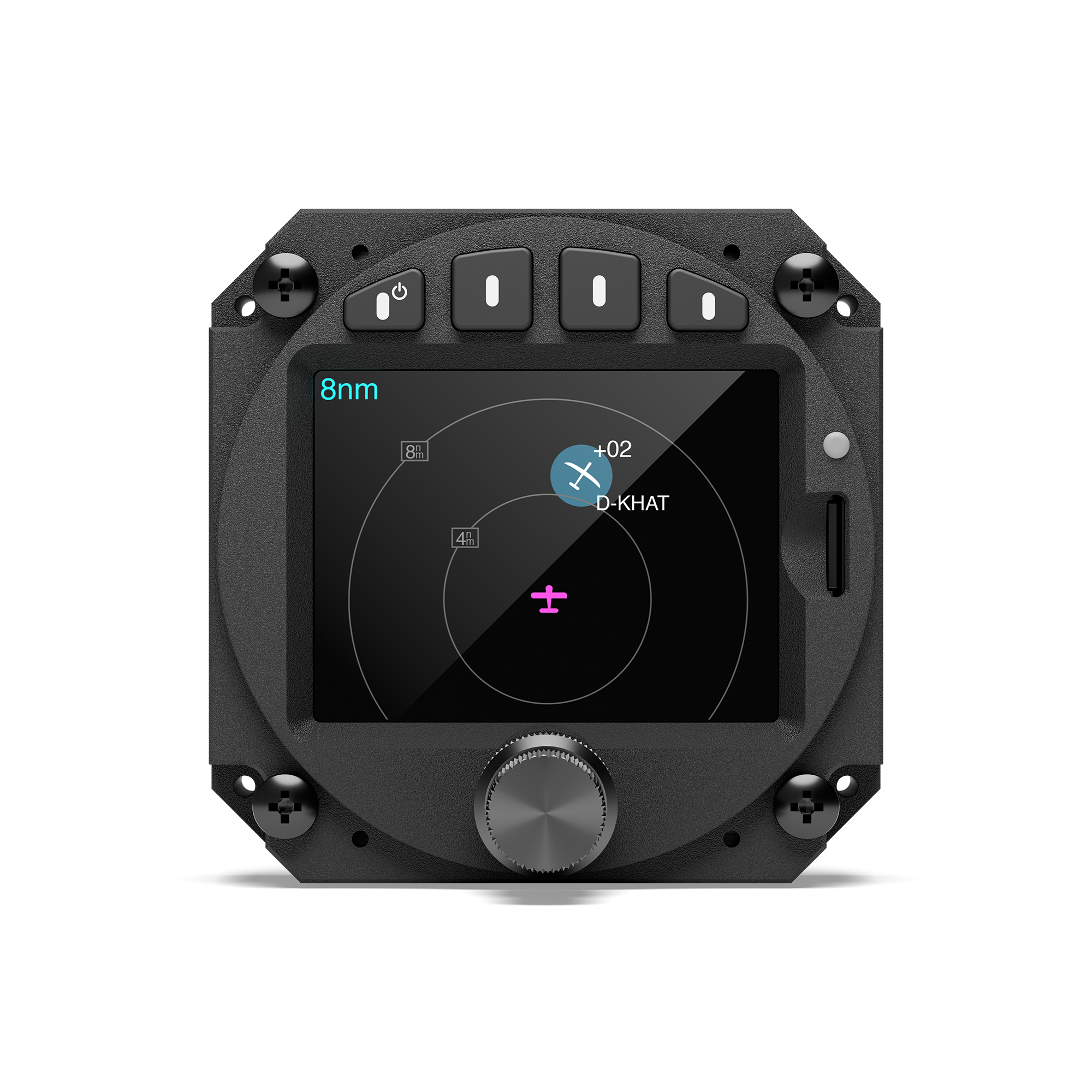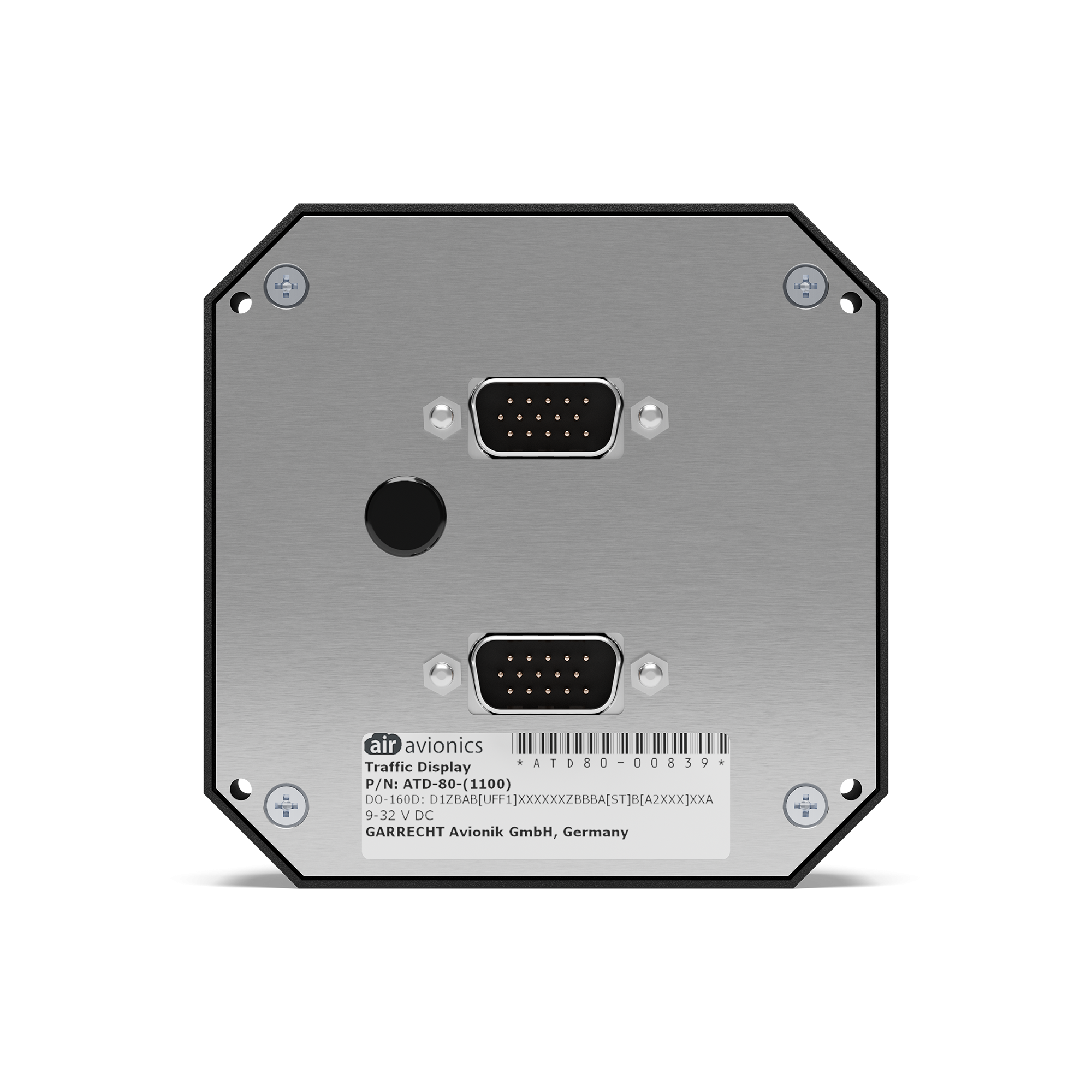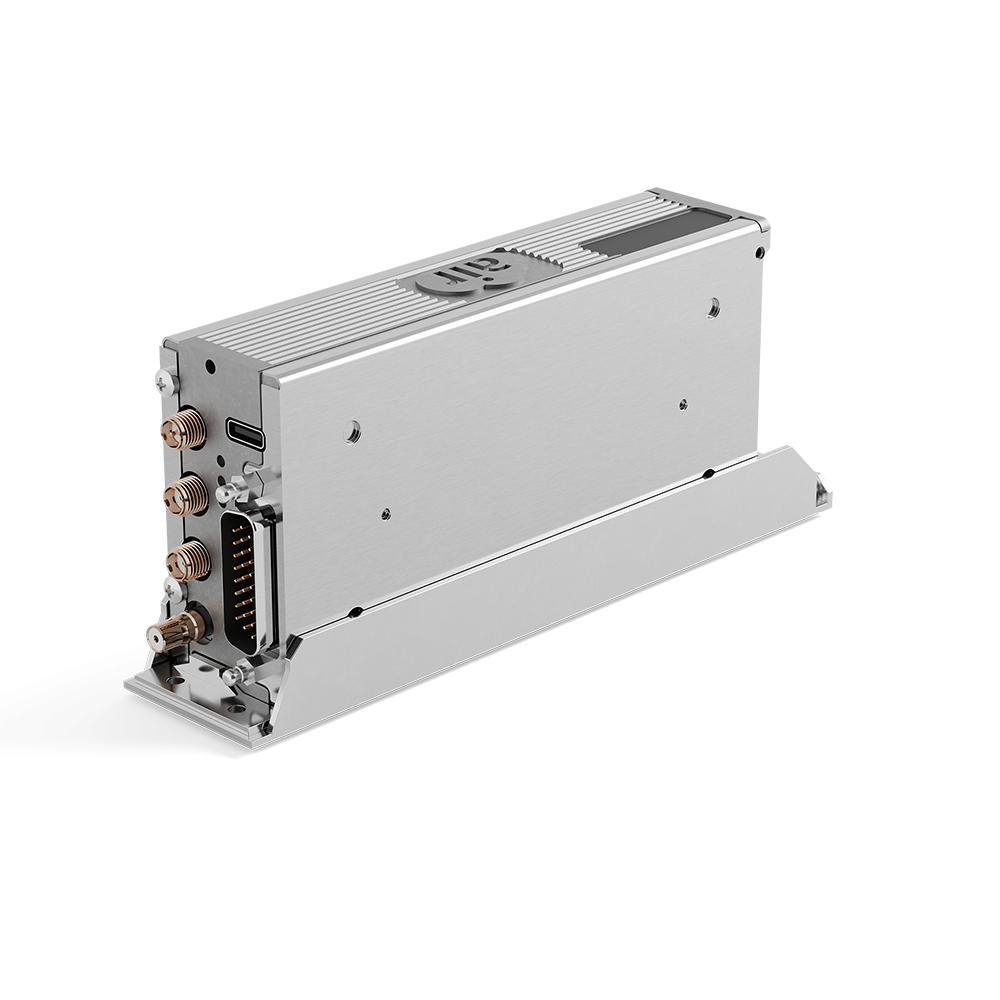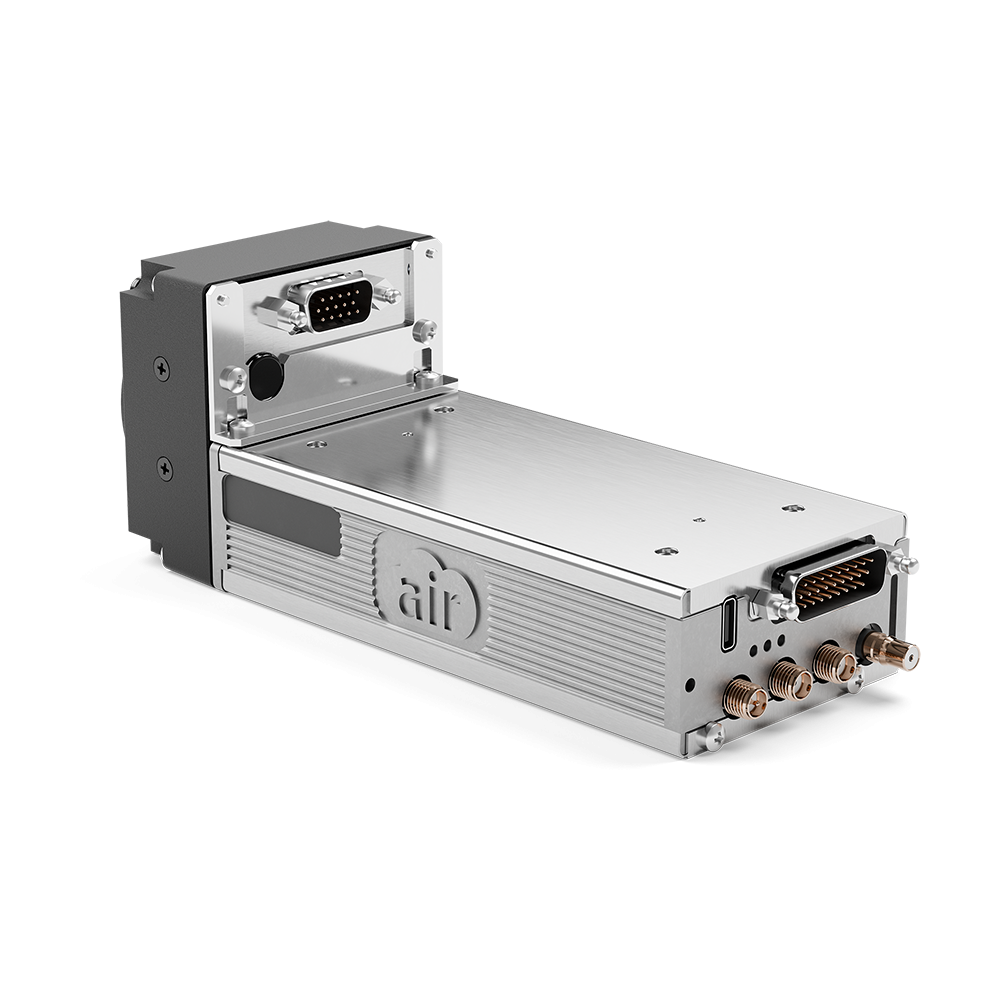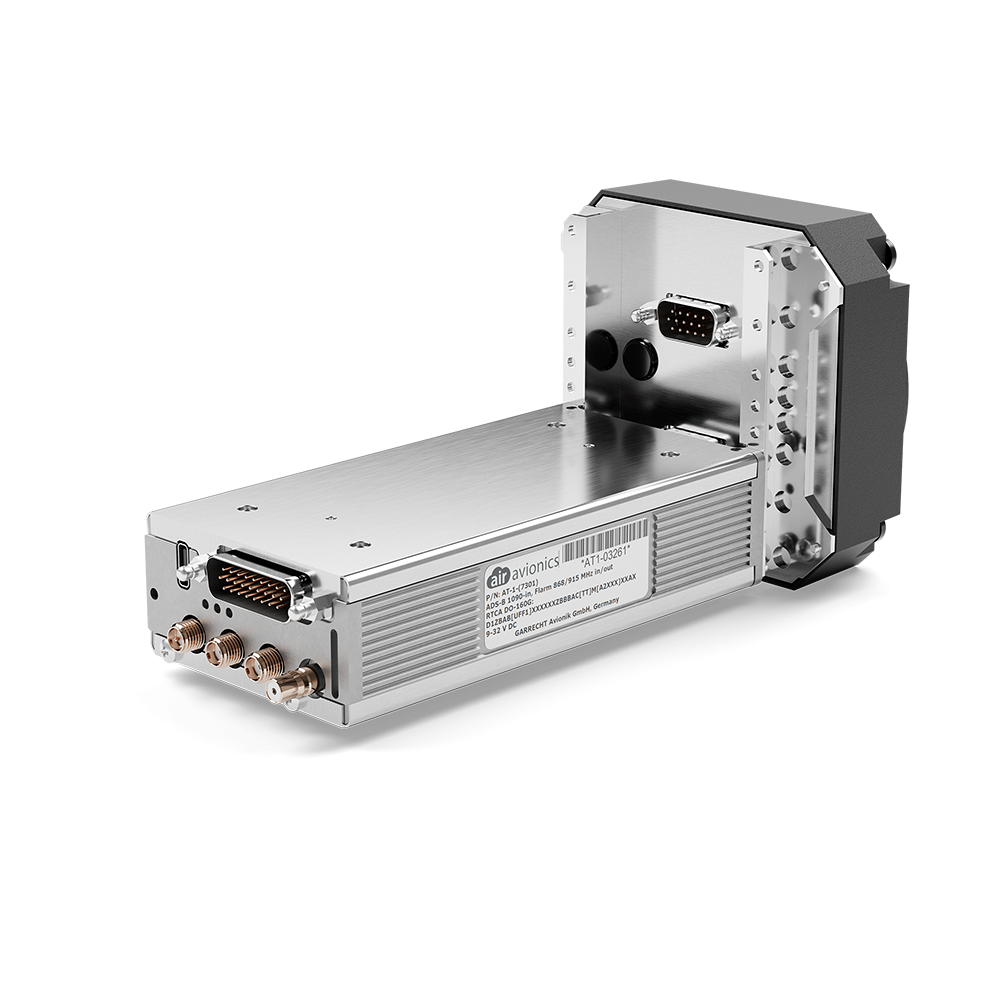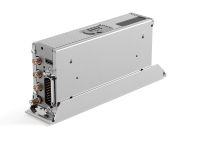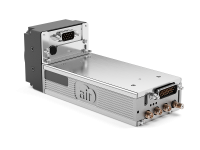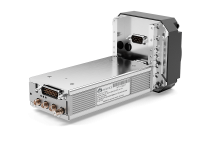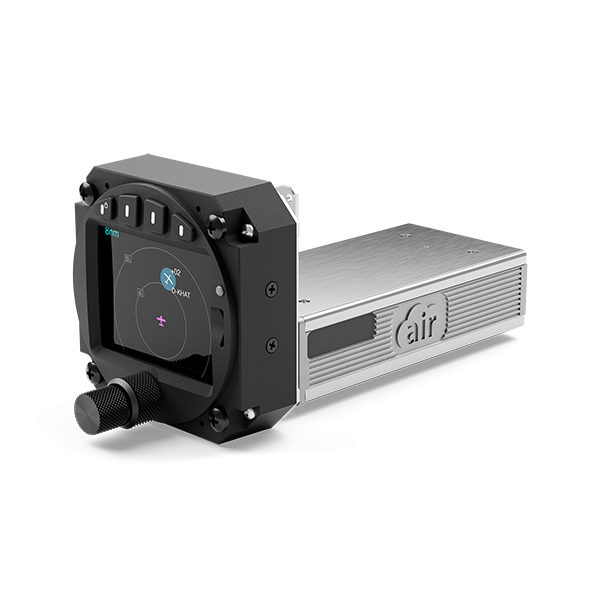
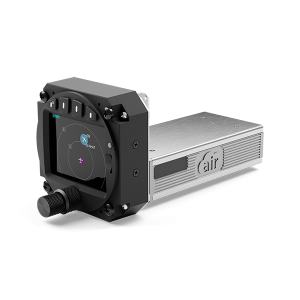
See what you have been missing.
Every year, around 40 aircraft are involved in a midair collision, half of which are fatal. Most of these accidents happen in good visibility and daylight. Our traffic avoidance systems help to find, identify, and avoid hazardous traffic. Our award-winning systems increase situational awareness of flight crews in thousands of installations worldwide. They are affordable, effortless to install, and easy to use.
Easy to install, affordable traffic systems for any aircraft.
Flying with a traffic system for the first time is an experience. You see what you have been missing. Our traffic systems help to make better decisions as they actively support a pilot‘s lookout. They provide better situational awareness, especially in situations with limited perception due to high workloads or complex traffic situations.
Safety-relevant instruments must be reliable, trustworthy, and of the utmost quality. Therefore, our traffic systems are produced within our certified production processes to stringent standards. This ensures they meet all requirements for reliable avionics systems.
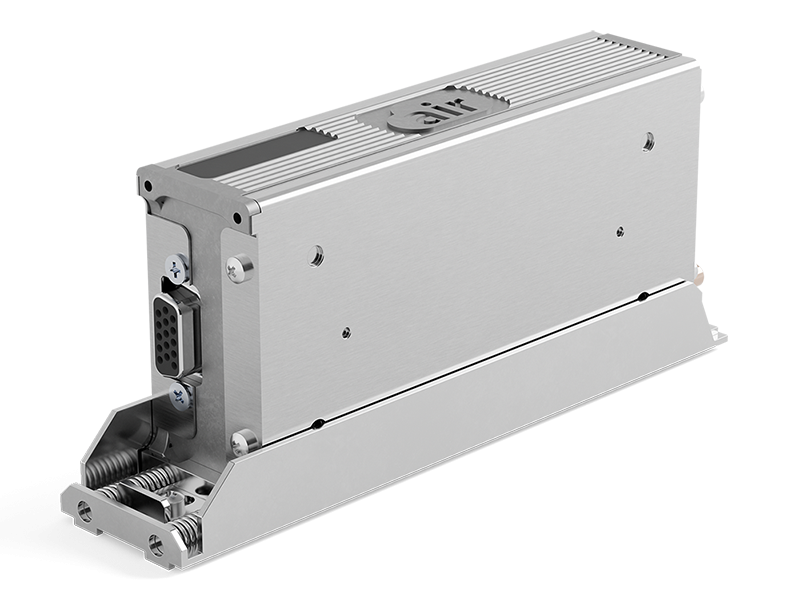
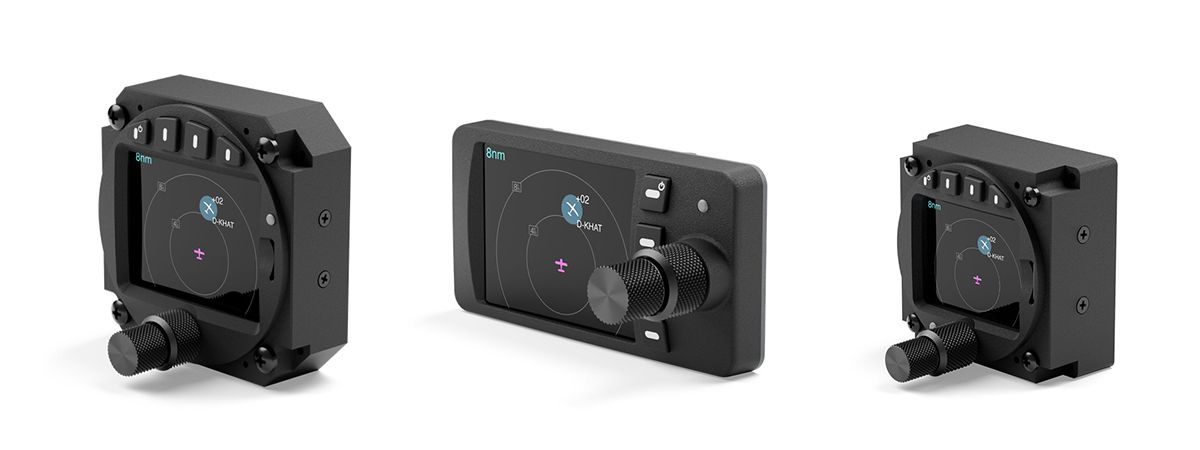
Helping you to fly safer.
Our traffic systems support pilots and effectively enhance traffic awareness. Intuitive warning features provide reliable data for making well-founded split-second decisions in hazardous traffic situations.
Our Traffic systems integrate perfectly into your aircraft.
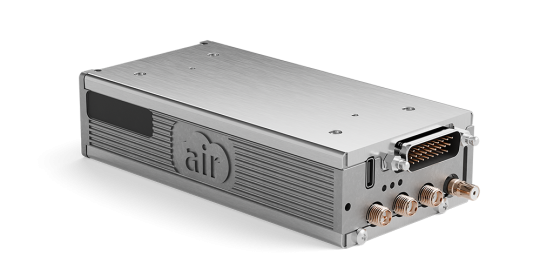
AIR Traffic (AT-1)
AIR Traffic (AT-1) is our traffic detection system tailored to European airspace. Its flexible interface concept allows for a direct connection to many compatible indicators, third-party navigation systems (including IFR-certified panel-mount systems such as GARMIN GTN®), or even Apps.
 AIR Traffic processes and displays a significant fraction of surrounding aircraft and drones, usually over 90% of the manned traffic on weekend days in Central Europe below FL100. It shows and is recognized by over 85,000 FLARM® users worldwide. AIR Traffic transmits and receives FLARM® data. Additionally, AIR Traffic receives ADS-B (1090MHz) and Mode-S traffic data (It can only compute the horizontal and vertical range of Mode-S traffic. The direction of Mode-S targets is not detected).
AIR Traffic processes and displays a significant fraction of surrounding aircraft and drones, usually over 90% of the manned traffic on weekend days in Central Europe below FL100. It shows and is recognized by over 85,000 FLARM® users worldwide. AIR Traffic transmits and receives FLARM® data. Additionally, AIR Traffic receives ADS-B (1090MHz) and Mode-S traffic data (It can only compute the horizontal and vertical range of Mode-S traffic. The direction of Mode-S targets is not detected).
AIR Traffic integrates seamlessly into existing avionics ecosystems. Minor Change Approvals and EASA Standard Changes are available for many aircraft types, simplifying the installation process’s legal part.
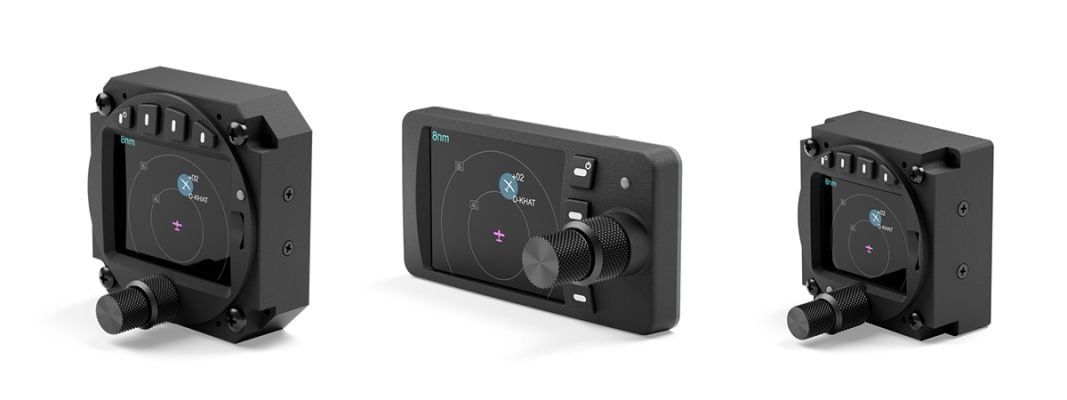
AIR Traffic Displays
AIR Traffic Displays are our premium traffic data display solutions. They feature robust hardware and advanced functionality that reduces flight crew workload and increases traffic awareness.
AIR Traffic Displays come in three form factors. They are based on our experience designing traffic systems and extensive university research. Their stunning color screens are perfectly readable in bright sunlight, yet they draw very little power.
AIR Traffic Displays are compatible with all FLARM® systems and many other traffic systems. AIR Traffic Displays can directly replace old FLARM®-Displays. They are covered by Minor Change Approvals for FLARM®-Compatible Systems and EASA Standard Changes (CS-STAN). They can be installed in a broad range of aircraft.
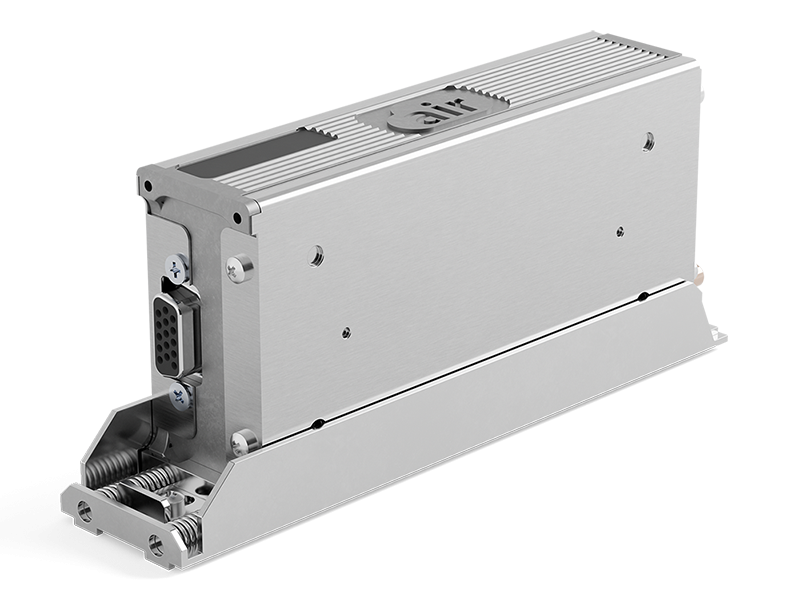
AIR Traffic (AT-1) with Mount (B579)

Europe’s most comprehensive traffic detection: AIR Traffic (AT-1)
Our AIR Traffic (AT-1) marks the heart of the traffic avoidance installation. It is a traffic detection system for hidden/remote installation. AT-1 combines ADS-B 1090 and Transponder reception with the latest generation FLARM transmitter and receiver (PowerFLARM with two FLARM antennas and antenna diversity).
Receives More Traffic
As it is specifically designed for European airspace, the AIR Traffic (AT-1) receives more targets than other systems. For example, it receives SIL=0 ADS-B targets, common in Europe’s lower airspace but not received by most American-made receivers.
AIR Traffic shows the exact 3D position of FLARM® and ADS-B Traffic and the distance and relative altitude of Mode-S transponders.
With over 85,000 FLARM® systems in use worldwide, AT-1 makes a considerable fraction of airspace users conspicuous to you, as your position is also sent to all other airspace users over the FLARM frquencies.
Voice Warnings
AT-1 can be installed without any display if the panel is full. Traffic is announced directly in the aircraft’s audio system in a clearly understandable, natural voice. Voice warnings actively announce threat traffic, helping to reduce head-down time and increase situational awareness.
Easy to install
We have sold thousands of traffic systems and have listened closely to installers. AIR traffic features robust connectors, an extremely compact design, and good mounting options. It can even be combined with an AIR Traffic Display into a single panel-mount unit.
Simple configuration
Configuring AIR Traffic is as simple as using the Internet—with any smartphone, tablet, or PC. Simply connect to the WiFi® network AIR Traffic provides and open a website. Additionally, it features advanced diagnostic functions that help test and verify its correct function.
Certified installation
EASA Minor Change Approvals are available for many aircraft types, simplifying the legal part of the installation process. AIR Traffic has been qualified according to RTCA DO-160 for environmental conditions. Therefore, maintenance organizations can integrate it into larger aircraft types and helicopters.
Integrates seamlessly
AIR Traffic‘s flexible interface concept allows for direct integration into existing cockpits. It works with any traffic indicator on the market, many navigation systems (including IFR-certified panel-mount systems such as GARMIN® GTN®), and even with apps like ForeFlight® or SkyDemon® over its integrated WiFi® interface.
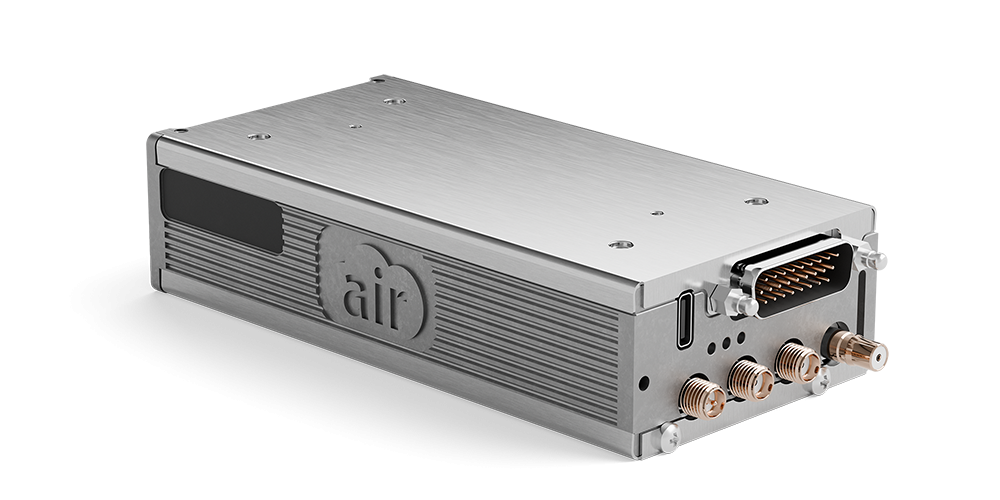
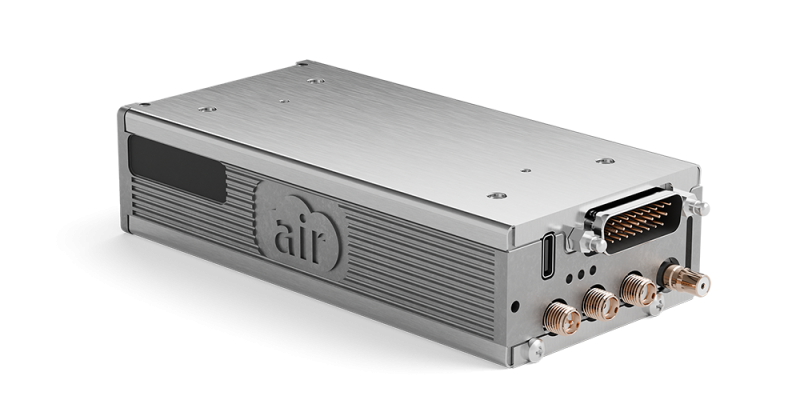
Traffic technology
- Latest generation PowerFLARM radio technology with antenna diversity and increased range.
- Works worldwide (region-based automatic frequency change)
- High sensitivity ADS-B receiver for ADS-B IN (SIL=0-3)
- Mode-S receiver
Warning Functions
- Warns from traffic, obstacles, alert zones (obstacle database required at cost)
- Audio output for warning sounds and voice
- Relay input/output for control of external components (like ACL)
GNSS
- High-precision GNSS receiver
- Software configurable supply voltage for GPS antennas. Works with 3V, 5V active GPS antennas, and splitters (0V)
- Transmits position data to Mode-S transponders for ADS-B out
Diagnosis and analysis functions
- Logs flight tracks for later analysis
- Three status LED and comprehensive self tests
- Antenna health monitoring and recognition (GPS)
Support
- Backed by AIR Avionics’ reknown customer support via eMail and telephone
- Zero downtime exchange program for affordable, quick, and easy replacements of defective units
- Repairs conducted in our PART145 certified repair center
- Two year warranty
Compatibility
- Independently configurable data interfaces: 3x RS-232, 1x ARINC 429, WiFi®. Bluetooth® for future functions.
- Data protocols: GARMIN TIS, FLARM NMEA, NMEA0183, GDL90, ASTERIX21, TCP/IP
- Works with hundreds of different systems capable of displaying traffic.
Quality
- All-metal enclosure
- DO-160 qualified for environmental conditions
- Made in Germany
- Produced in PART21 environment
Dimensions and Connectors
- 122mm x 61.5mm x 30.75mm (4.8″ x 2.42″ x 1.21″)
- Weight: 262g (0.56 lbs)
- Connectors: D-SUB 26HD (Rear), D-SUB 15HD (Front), SMA (FLARM A+B), rpSMA (ADS-B), QMA (GPS), USB
- Static port pressure connector (optional)
- Can be directly combined with AIR Traffic Display 57/80
Wireless functions
- Bluetooth® and Wi-Fi® Interface
- Transmits traffic and GPS data to aviation apps like ForeFlight®
- System configuration via webbrowser
AIR Traffic with AIR Traffic Display 57
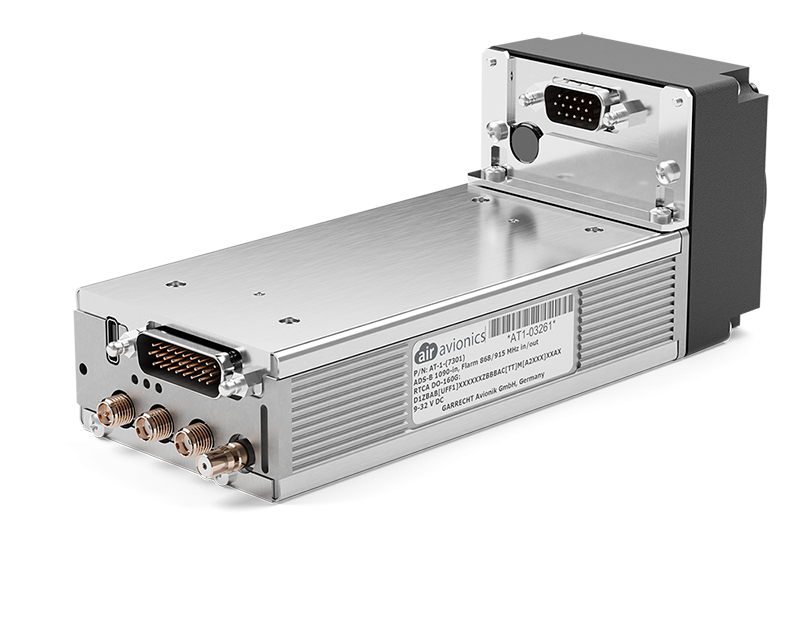
A great addition to your Air Traffic (AT-1) Installation.
A stunning way to gain situational awareness: AIR Traffic Displays

AIR Traffic Displays are cockpit displays that provide traffic awareness. Many of their functions have been developed in projects at leading research facilities, such as the Institute of Flight Systems and Automatic Control at the Technical University of Darmstadt in Germany.
We have added a range of unique functions to increase safety. The radar symbology helps differentiate different types of aircraft, e.g., helicopters from gliders or jets. An easy-to-interpret alert view helps avoid misinterpretations in conflicting traffic situations. Traffic is monitored after its signal has been lost, with a tracking of its probable position.
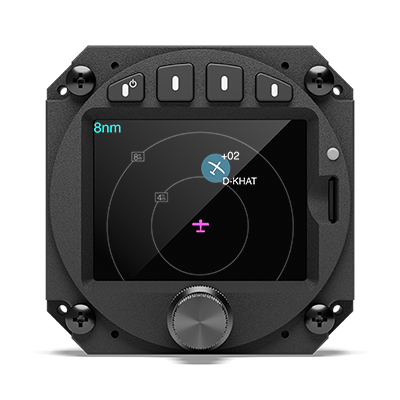
Traffic Indication
Traffic is indicated on a radar-like screen. The range can be adjusted by using a rotary knob from .5nm to 32nm radius (units are configurable). The own aircraft (magenta) and other received traffic are shown with aircraft symbols.
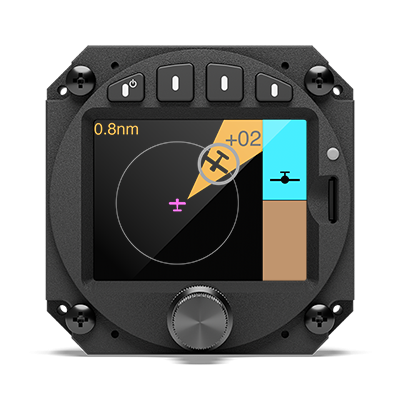
Alert View
The alert screen has been designed based on current research. It helps reduce the potential for misconceptions, especially in situations with high aircraft bank angles. The screen is easily interpreted, even for crews unfamiliar with traffic warning systems.
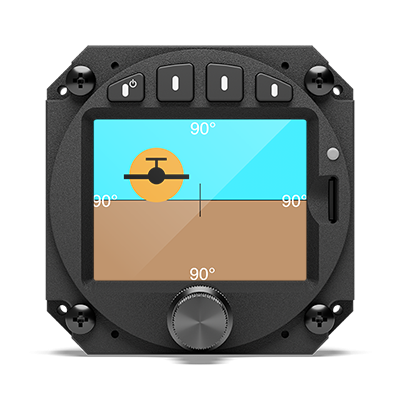
Head-On Alert View
Conflicting head-on traffic is displayed using a unique “horizon-style” indication, allowing quick and easy situation conception. The new indication has been developed in cooperation with research facilities, with expert interviews and surveys of several hundred pilots. It can help reduce reaction time in conflicting situations.
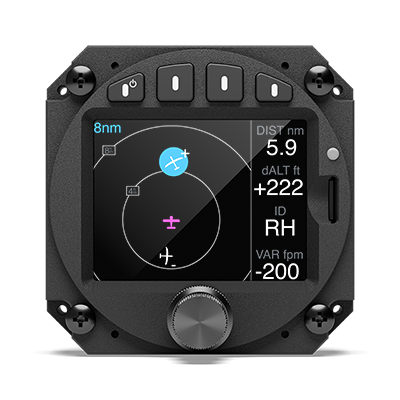
Data Fields
Data fields can optionally be shown on the right side of the radar screen. Pilots can actively select a target to review detailed information, such as vertical separation or distance. Targets of special interest can be marked in different colors for easier recognition.
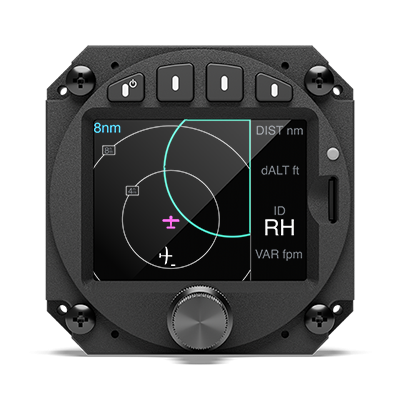
Signal Loss
After losing the signal of a selected target, the target’s last known position is continuously monitored and displayed with increasing vagueness. This helps keeping an eye on out-of-range-targets and estimating their probable position.
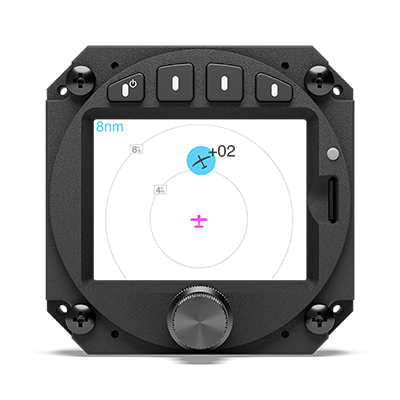
White Mode
The user interface can be switched to a white mode. Some users prefer the white user interface during the day. Especially, if other white displays are used in the same panel, the AIR Traffic Displays show a familiar face.
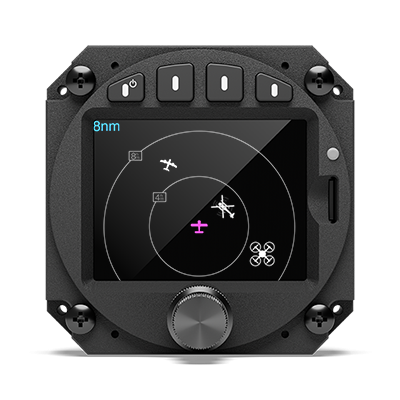
Symbology
Different types of traffic (powered aircraft, gliders, circling aircraft) are shown with different symbols. Very high or very low targets are smaller than targets at the same altitude as the own aircraft. Differential altitude is directly indicated on the symbol, helping to interpret the traffic situation easily.
AIR Traffic Display 11
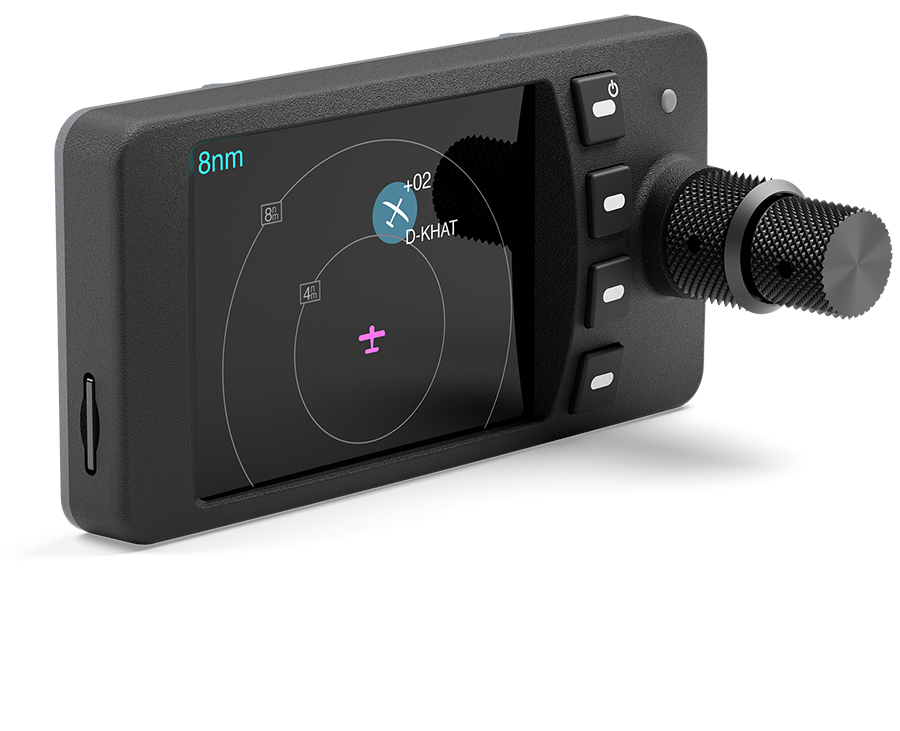
Functions
- Displays traffic from FLARM® or GARMIN® TIS®/GDL-90 compatible systems.
- Starting Summer 2025: Optionally displays weather data via GDL-90.
- Warns from traffic, alert zones, and obstacles.
- Shows detailed traffic information such as trajectories and identification.
Support
- Backed by AIR Avionics’ renowned customer support via email and telephone
- Zero downtime exchange program for affordable, quick, and easy replacements of defective units
- Repairs conducted in our PART145 certified repair center in Germany.
- Two-year warranty
Dimensions
- ATD-57: Small panel cutout. 61.5 x 61.5 x 26.3mm (2.42″ x 2.42″ x 1.03″), ca. 150g (1/3 lbs)
- ATD-80: Large panel cutout. 83 x 83 x 26mm (3.26″ x 3.26″ x 1.01″), ca. 210g (0.46 lbs)
- ATD-11: External version. 100.5 x 50.5 x 22mm (3.95″ x 1.98″ x 0.8″), ca. 130g (0.3lbs)
- Connectors: 2x D-SUB 15HD
- Controls: 4 push buttons, one concentric dual rotary knob with push button
Compatibility
- Works with all FLARM compatible systems that have ever been sold.
- Works with many GARMIN TIS/GDL90 compatible systems
Display
- DO-254, DO-160 and ETSO-C113 qualified hardware
- Perfectly readable in sunlight, extreme viewing angle
- Usable at night
Quality
- All-metal enclosure
- DO-160 qualified for environmental conditions
- Made in Germany
- Manufactured in PART21 environment in Germany
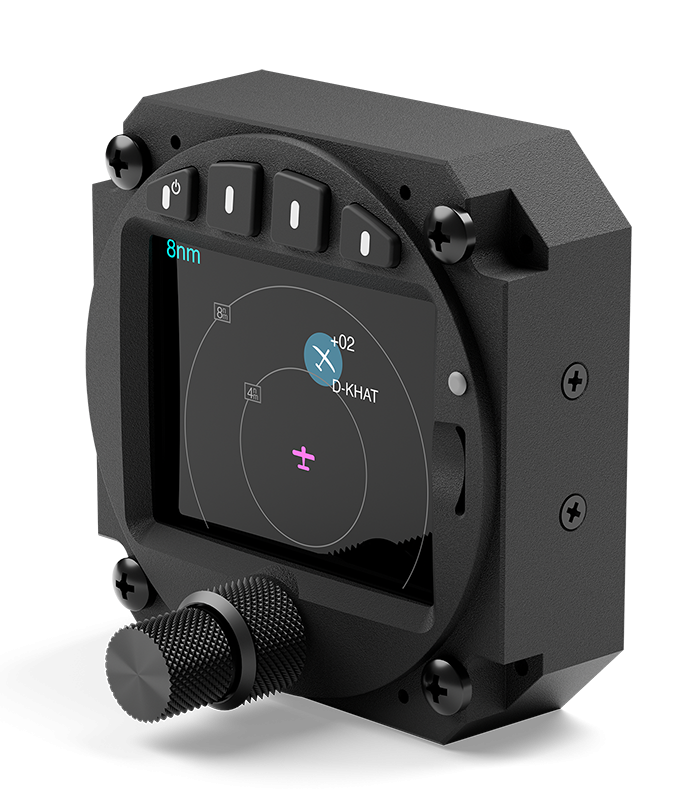
AIR Traffic Display 80
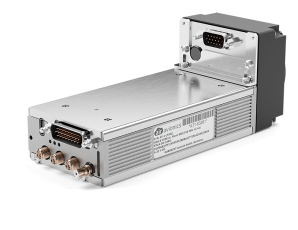
Installation Options: AIR Traffic and AIR Traffic Displays
AIR Traffic (AT-1) can be installed remotely. It can be installed without any display method, just using its natural voice audio output. An optional mount helps with the fixation in the aircraft.
Additionally, it can be easily integrated into existing cockpits. It can be connected to traffic displays and navigation systems and wirelessly send traffic data to apps (many interfaces can work in parallel).
As an option, it can be installed together with our AIR Traffic Displays (57mm or 80mm) as a single, compact unit.
Purchase Your System Today
Review options and purchase our award-winning collision avoidance products directly at AIR STORE.
Find an AIR Avionics Dealer Near You
Our avionics products are available worldwide from retail dealers and maintenance organizations.
Request a Quick Quote
Share some of your data, and you will receive a free and non-binding quotation tailored for your aircraft.
Not all functions shown are included with delivery of the respective units. Obstacle functions require a valid obstacle database which may lead to additional costs.
AIR Traffic is only capable of receiving Mode-S traffic in horizontal and vertical range. The direction of Mode-S targets is not detectable.
Traffic systems can never provide an absolute protection from collisions or dangerous approximations.
